#32-bit data memory
Explore tagged Tumblr posts
Text
https://www.futureelectronics.com/p/semiconductors--microcontrollers--32-bit/stm32f207igt6-stmicroelectronics-3044937
Programmable pic microcontrollers, USB microcontrollers, program memory
STM32F Series 1 MB Flash 132 KB RAM 120 MHz 32-Bit Microcontroller - LQFP-176
#STMicroelectronics#STM32F207IGT6#Microcontrollers#32 bit#Programmable pic#USB microcontrollers#program memory#lcd#32-bit data memory#data#32 bit embedded microcontroller manufacturers#wireless microcontrollers
1 note
·
View note
Text

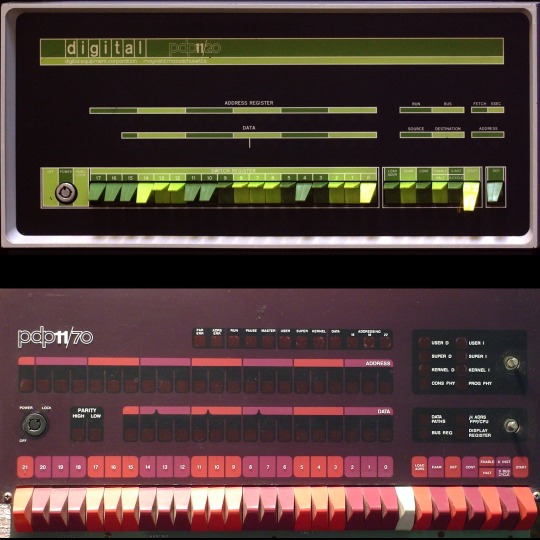
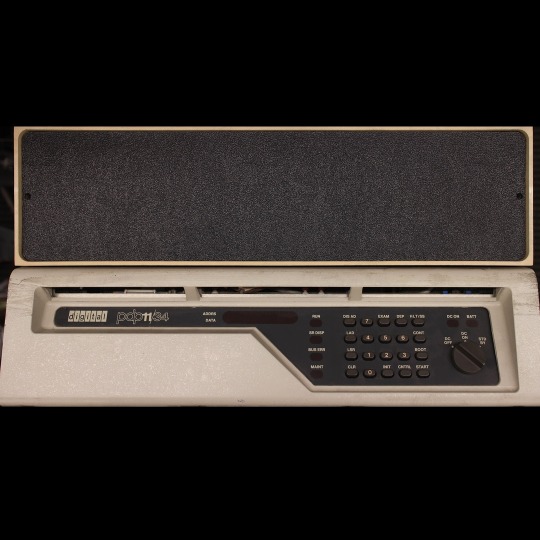


🎄💾🗓️ Day 4: Retrocomputing Advent Calendar - The DEC PDP-11! 🎄💾🗓️
Released by Digital Equipment Corporation in 1970, the PDP-11 was a 16-bit minicomputer known for its orthogonal instruction set, allowing flexible and efficient programming. It introduced a Unibus architecture, which streamlined data communication and helped revolutionize computer design, making hardware design more modular and scalable. The PDP-11 was important in developing operating systems, including the early versions of UNIX. The PDP-11 was the hardware foundation for developing the C programming language and early UNIX systems. It supported multiple operating systems like RT-11, RSX-11, and UNIX, which directly shaped modern OS design principles. With over 600,000 units sold, the PDP-11 is celebrated as one of its era's most versatile and influential "minicomputers".
Check out the wikipedia page for some great history, photos (pictured here), and more -
And here's a story from Adafruit team member, Bill!
The DEC PDP-11 was the one of the first computers I ever programmed. That program was 'written' with a soldering iron.
I was an art student at the time, but spending most of my time in the engineering labs. There was a PDP-11-34 in the automation lab connected to an X-ray spectroscopy machine. Starting up the machine required toggling in a bootstrap loader via the front panel. This was a tedious process. So we ordered a diode-array boot ROM which had enough space to program 32 sixteen bit instructions.
Each instruction in the boot sequence needed to be broken down into binary (very straightforward with the PDP-11 instruction set). For each binary '1', a diode needed to be soldered into the array. The space was left empty for each '0'. 32 sixteen bit instructions was more than sufficient to load a secondary bootstrap from the floppy disk to launch the RT-11 operating system. So now it was possible to boot the system with just the push of a button.
I worked with a number DEC PDP-11/LSI-11 systems over the years. I still keep an LSI-11-23 system around for sentimental reasons.
Have first computer memories? Post’em up in the comments, or post yours on socialz’ and tag them #firstcomputer #retrocomputing – See you back here tomorrow!
#dec#pdp11#retrocomputing#adventcalendar#minicomputer#unixhistory#cprogramming#computinghistory#vintagecomputers#modulardesign#scalablehardware#digitalcorporation#engineeringlabs#programmingroots#oldschooltech#diodearray#bootstraploader#firstcomputer#retrotech#nerdlife
290 notes
·
View notes
Note
How was windows 95 revolutionary? I would love to hear more about it
HI HELLO THANK YOU FOR ASKING
okay okay okay SO
Windows 95 had a major overhaul in multiple aspects. It’s the first of the 9x series of WinOS, followed by 98 and ME. In order to understand why Windows 95 is such a big deal, we first need to discuss Windows 3.x

(Wikipedia, Windows 3.1, image 2)
This is Windows 3.x; specifically, Windows for Workgroups 3.11. 3.x was the first series of Windows OS to become popular, and it itself was a major improvement over the previous 1.x and 2.x OS, but I won’t get into that too much. Like the previous versions of Windows, 3.x is basically a graphical shell for MS-DOS. You may be familiar with DOS; it looks like this:
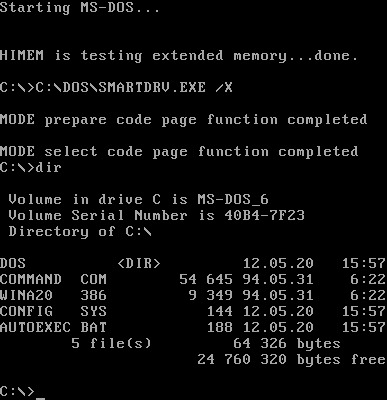
(Wikipedia, MS-DOS, “History”, image 1)
DOS is, primarily, a typing interface system. You could run programs with graphics on it, like Oregon Trail or Flight Simulator, but at its core, DOS wasn’t very graphical. If you wanted to run a program, you typed its name. If you wanted to check the size of a file, you had to tell the computer to reference the directory.
Notably, DOS isn’t super user-friendly to new users. If you’re using a computer for the first time, how do you know what an A drive or a C drive is? How do you know the name of the file you need to run to play the game you’re trying out, or how to tell the computer where to find it?
DOS was incredible for its time, and was still a very powerful system. Several early operating systems from several companies used some version of DOS; the early Apple and Mac computers ran on it as well. Microsoft’s version, MS-DOS, had been popular for some time, but Apple’s graphical interface on Mac computers proved intensely popular for newer or less experienced users. MS-DOS couldn’t compete. In an attempt to make MS-DOS more user friendly, we get Windows!
(We will get to windows 95 I PROMISE)
Notice the differences between Windows 3.x and MS-DOS. Programs have a visible location now; they’re in the “Program Manager”, and they have icons you can click on to run them. Files can be found in a “File Manager”, and they have images of file trees to show you where everything is. You can have multiple windows open at once; see how the clock is visible in the corner while Minesweeper is open and running.
However, Windows 3.x wasn’t perfect. It was still built entirely off of DOS, and relied on DOS compatibility to function. Because DOS’ data was stored as 16-bit chunks, so was every file and program on Windows 3.x. This was a limiting factor; there was a ceiling on how big a program could be, how long a file name could be, and how much memory you could use. 32-bit data processing was possible with the computer hardware available in the 90s, but everything in Windows 3.x still ran on 16-bit chunks regardless of hardware, meaning slower runtimes and less flexible software options.
(If this 16-bit and 32-bit stuff doesn’t make much sense to you, don’t worry about it too much. The important thing is that 16-bit and 32-bit software are not compatible with each other, and that 32-bit software generally has more flexibility and speed than 16-bit, while 16-bit software takes up less of the computer’s resources.)
3.x had other issues as well. You could have multiple programs open at once, but *running* multiple programs was a different story. If you attempted to, the OS often struggled to prioritize which program to run. Furthermore, while 3.x’s interface was leaps and bounds more accessible than MS-DOS… that was a low bar to clear. 3.x was still clunky for a lot of users to use, and for new users, learning where to find their programs and how to run them was hard.
Installing anything new onto the computer was also a hassle; if you wanted to use a newfangled mouse, for instance, you had to install drivers which told the computer what a mouse was. Even if you plugged the mouse in, it wouldn’t necessarily work. Same was true for other common add-ons, like new keyboards, printers, and scanners. Sticking a disk in the floppy drive wouldn’t inherently mean the program on it ran; you still had to find the correct drive and open the file and run it.
3.x also just suffered from… not telling users what to do. This sounds weird to us now; Clippy is practically a meme because users found being told what to do by a paper clip so annoying. But 3.x was radically different from an MS-DOS command prompt, and if you’d never used a graphical interface like 3.x before, it was easy to get lost. Look at the 3.1 interface; could you find and run MS-Word from there? Could you find a specific document and open it? Could you save it to a floppy disk and share it with your coworker, without being told how to do it?
Enter… Windows 95
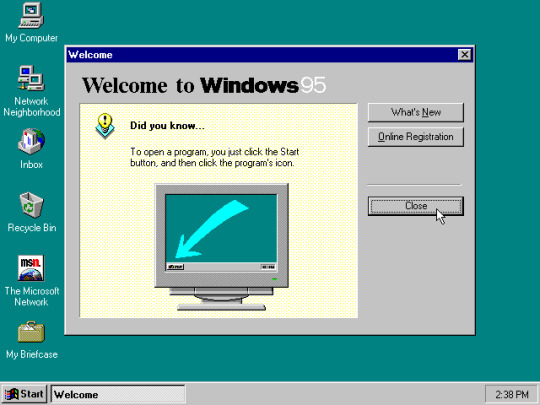
(Wikipedia, Windows 95, Image 1)
Isn’t she beautiful?
Right away, some new features jump out at us. Upon startup, we get this pop-up menu welcoming us to the system. It starts with an important fact for new users; how to find and run a program. There’s a taskbar now; unlike 3.x, which displayed minimized open programs on the desktop, open programs have their own designated spot along the taskbar. The default desktop is organized for user convenience now, with commonly used programs on display. The time is automatically displayed along the taskbar, instead of having to run a clock application, and the font of the programs and windows isn’t just the chunky MS-DOS font anymore. This desktop is much less chaotic; sleeker and cleaner, with more graphics and color options visible from the jump.
By contrast, 3.x systems didn’t have a dedicated start menu. When you booted up, you were immediately hit with the program manager and little else. What’s a program manager? Up to you to find out! Meanwhile, Windows 95 is already introducing important features to the user. This is what the Start menu does. Here’s where it is. Here’s how you use it. The Start menu also had quick access to a help menu, where frequent user issues could be troubleshooted, and basic information about he system was accessible. Clean, simple, user-friendly.
Take a closer look at those default desktop icons. In 1995, internet connections were more commonplace, using dial-up internet services such as AOL through phone lines. Microsoft immediately shows you your connectivity options; the Microsoft Network is right there, ready to be investigated. When you run it, it immediately starts helping you set up your internet. If you click on Inbox, you’re taken through the process of setting up an email account via Outlook. If you’re a new user who previously didn’t know how to send an email, or connect to the internet, Windows 95 had an answer available right there.
We do need to pause here and acknowledge that bundling Microsoft products onto an OS automatically like this was not universally received well. While conveniently available to new users, programs like Microsoft Network are, well, Microsoft proprietary software. By offering them automatically like this, and not including bundle options for other software, Microsoft was shunting more and more users to their own software and away from competitors’ services. They were sued over that! It’s strange to imagine today, but at the time, Microsoft bundling its software as the default option for its OS users was a major violation of the accepted values of free choice for OS and software.
if only that lawsuit had stuck… I digress. nowadays you can’t uninstall Microsoft Edge without breaking something.
POINT BEING. Everything about this new design is user-focused. Windows 95’s major new features weren’t necessarily making it more powerful for experienced users. Instead, a lot of the focus was on ease of use; lowering the barrier to learning new skills on the computer.
Case in point: plug and play. Plug and play may be my single favorite feature of Windows 95. It’s a quintessential component of understanding who Windows 95 was for, and why it was so successful on the market.
Plug and play is very simple. You have a new component you need your computer to sync with, such as a printer. You plug the printer into the computer, insert the accompanying floppy disk if it has one… and a window pops up, asking you what you’re trying to install. You click on what you’re installing, and an installation wizard takes you through each step, and that’s it. All the necessary software is installed, all the necessary information is saved to the computer, and now you can print something. That simple.
Compare that to 3.x, where installing a printer meant plugging it in… and then finding where in the system it showed up, and making sure everything was properly synced yourself, and running any accompanying files yourself, all while following a physical manual (at best) or flying by the seat of your pants. If you know how to do that, that’s not a big deal; once you have that skill down, it’s not super hard to transfer it. But new users don’t have that advantage. Your grandpa who just learned to use MS-Word to make a Christmas card doesn’t know how to connect his computer to the printer. He doesn’t know if he needs to install or run any files or drivers first. And why should he? That’s not why he was using the computer. Plug and play removes the barrier to entry; now, your grandpa just plugs the printer into the computer, clicks “next” a few times, and it works.
Windows 95 was also the first 32-bit system Microsoft released… kind of. 9x systems are weird, in that they have both 32-bit and 16-bit programs that they rely on to function. It’s less a clean break from 16-bit, and more a step in a new direction. Now, there are dedicated Windows programs which only run in Windows; the OS has some measure of independence, although it still relies on DOS architecture for some of its processes. You can still access the DOS command prompt, either by specifying on startup or through the MS-DOS prompt button, but it’s not the entire backbone of Windows 95. Viruses which ruined MS-DOS computers don’t always run the same way; you have more security than before. And in the early years, very few viruses were written that could attack 9x systems. The new OS had more power and flexibility in its 32-bit capabilities, with the added bonus that new users had a slightly better shield against virus infection (for a bit) (that didn’t last long).
Nowadays, 9x architecture is a thing of the past; the last 9x system, Millenium Edition, was released in 2000. Even as the 9x architecture was becoming massively successful, Microsoft was investing in a new type of OS which was coded from the ground up, in a non-assembly language which didn’t rely on DOS to function. At the time of development, this new technology, or NT, had too high of system requirements to really be functional on anything but the most robust computers. For a home user in the 90s, 9x was the best option, with lower memory requirements and similar or faster speeds to NT on home systems. But on the horizon in 2001, an NT storm was brewing… an XP storm…
20 notes
·
View notes
Note
For the IUD anon: I've had a Kyleena IUD for a little over a year and a half now and I've loved it. It's hormonal and it's one of the smaller ones in terms of physical dimensions. I'd heard a lot of horror stories (who doesn’t) going in, but I have a gyno I really trust, which I think is the biggest part.
She gave me a prescription for misoprostol (brand name is cytotec) to take the morning of since it helps dilate/soften your cervix, but I know that's not super common. But I know misoprostol has also come under some scrutiny politically recently since it's used in abortions sometimes, so it's possible that some gynos who would prescribe it for IUD insertion are maybe not doing that as much anymore? I don't have any data on that, but regardless.
The other thing I'll say is that I scheduled my appointment for the insertion right as my period was ending (I was having some spotting still but not really any flow) because the cervix also tends to be a bit dilated at that point still, so if you aren't prescribed anything then it may be a good idea to schedule for just before/after your period as it may be a bit easier.
I think I saw some other responses about bleeding post-insertion, which I don't particularly remember experiencing much, but I was still spotting also so it's possible I just didn't think enough of it to have it stand out in my memory.
In terms of the actual process, it honestly wasn't awful, but pain-wise I'm not the best judge. I used to have debilitating cramps for 2-3 days of my period, and during the worst of it would be pretty much immobilized on the couch with a hot pad even after taking pain meds. So. The insertion itself was pretty tame, comparatively. It wasn't nothing, but it just felt like what I would call moderate cramping. I did have some fairly decent cramps afterwards as well, starting maybe 10min or so after. They didn't last too long, though. So, I'd second the advice of taking some ibuprofen or whatever your preferred pain med is.
My gyno by default does a one month post insertion check up but it's possible that others just do follow ups if something doesn't seem right to you. Just take it slow and listen to your body.
In terms of longer term trends, my periods are definitely a lot lighter and I don't really get cramps anywhere close to what I used to. At worst I take some pain meds for a day but they get me back to not feeling any discomfort. The only other thing really is that the amount of time between my periods and how long they last is actually more variable now. Used to be 28 or 29 days from the start of my cycle to the next like clockwork, with about 7 days of bleeding, but now it can be anywhere from 26-32. Although, it generally goes so that I have a few months with like 30-32 days between with maybe a 4-5 day duration and a few months with less time from start to start but a few more days of bleeding.
Hope this helps!!
Thanks for sharing!
-Fae
22 notes
·
View notes
Text
When whipping up Railgun in two weeks' time for a game jam, I aimed to make the entire experience look and feel as N64-esque as I could muster in that short span. But the whole game was constructed in Godot, a modern engine, and targeted for PC. I just tried to look the part. Here is the same bedroom scene running on an actual Nintendo 64:
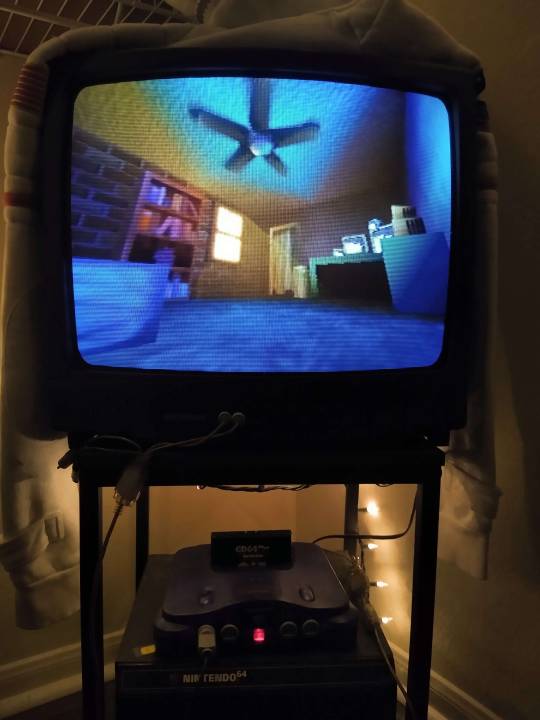
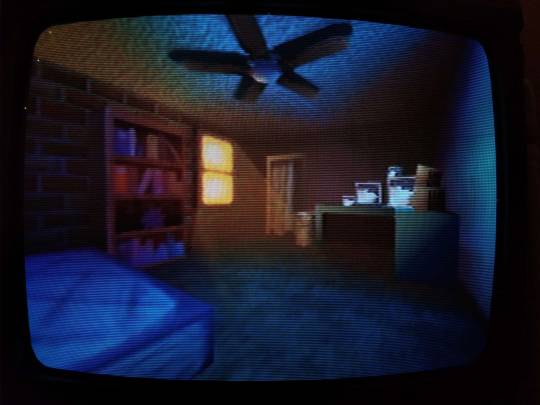
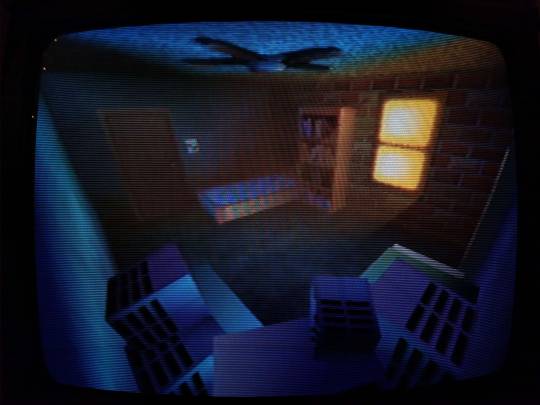
I cannot overstate just how fucking amazing this is.
Obviously this is not using Godot anymore, but an open source SDK for the N64 called Libdragon. The 3D support is still very much in active development, and it implements-- get this-- OpenGL 1.1 under the hood. What the heck is this sorcery...
UH OH, YOU'VE BEEN TRAPPED IN THE GEEK ZONE! NO ESCAPE NO ESCAPE NO ESCAPE EHUEHUHEUHEUHEUHUEH While there is a gltf importer for models, I didn't want to put my faith in a kinda buggy importer with an already (in my experience) kinda buggy model format. I wanted more control over how my mesh data is stored in memory, and how it gets drawn. So instead I opted for a more direct solution: converting every vertex of every triangle of every object in the scene by fucking hand.
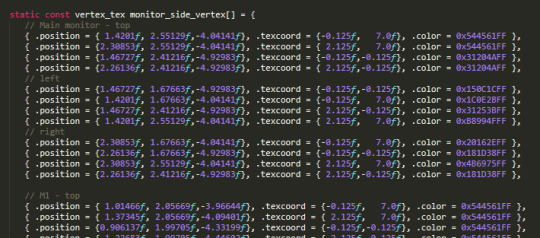
THERE ARE NEARLY NINE HUNDRED LINES OF THIS SHIT. THIS TOOK ME MONTHS. And these are just the vertices. I had to figure out triangle drawing PER VERTEX. You have to construct each triangle counterclockwise in order for the front of the face to be, well, the front. In addition, starting the next tri with the last vertex of the previous tri is the most efficient, so I plotted out so many diagrams to determine how to most efficiently draw each mesh. And god the TEXTURES. When I painted the textures for this scene originally, I went no larger than 64 x 64 pixels for each. The N64 has an infamously minuscule texture cache of 4kb, and while there were some different formats to try and make the most of it, I previously understood this resolution to be the maximum. Guess what? I was wrong! You can go higher. Tall textures, such as the closet and hallway doors, were stored as 32 x 64 in Godot. On the actual N64, however, I chose the CI4 texture format, aka 4-bit color index. I can choose a palette of 16 colors, and in doing so bump it up to 48 x 84.
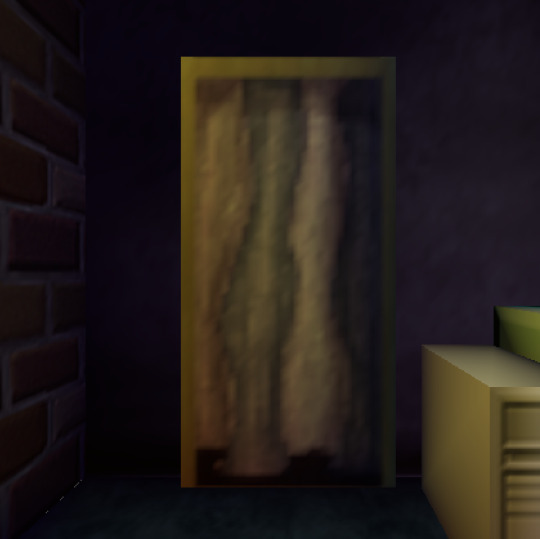
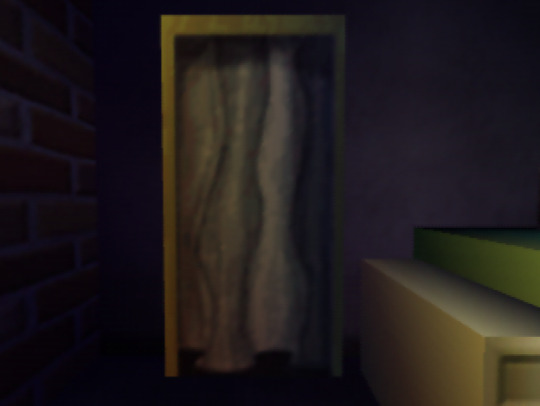
On the left, the original texture in Godot at 32 x 64px. On the right, an updated texture on the N64 at 48 x 84px. Latter screenshot taken in the Ares emulator.
The window, previously the same smaller size, is now a full 64 x 64 CI4 texture mirrored once vertically. Why I didn't think of this previously in Godot I do not know lol
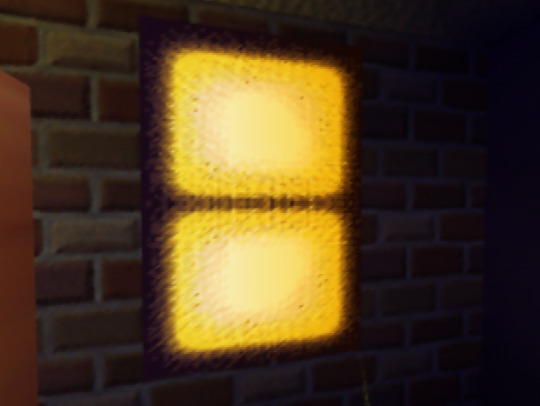
Similarly, the sides of the monitors in the room? A single 32 x 8 CI4 texture. The N64 does a neat thing where you can specify the number of times a texture repeats or mirrors on each axis, and clip it afterwards. So I draw a single vent in the texture, mirror it twice horizontally and 4 times vertically, adjusting the texture coordinates so the vents sit toward the back of the monitor.


The bookshelf actually had to be split up into two textures for the top and bottom halves. Due to the colorful array of books on display, a 16 color palette wasn't enough to show it all cleanly. So instead these are two CI8 textures, an 8-bit color index so 256 colors per half!! At a slightly bumped up resolution of 42 x 42. You can now kind of sort of tell what the mysterious object on the 2nd shelf is. It's. It is a sea urchin y'all it is in the room of a character that literally goes by Urchin do ddo you get it n-
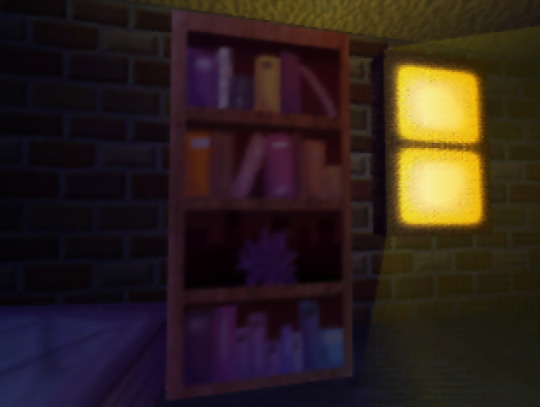
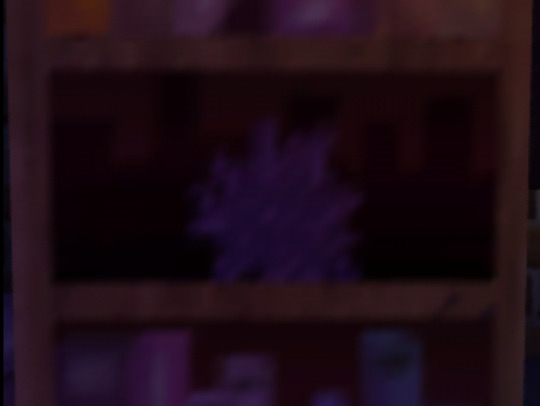
also hey do u notice anything coo,l about the color of the books on each shelf perhaps they also hjint at things about Urchin as a character teehee :3c I redid the ceiling texture anyways cause the old one was kind of garbage, (simple noise that somehow made the edges obvious when tiled). Not only is it still 64px, but it's now an I4 texture, aka 4-bit intensity. There's no color information here, it's simply a grayscale image that gets blended over the vertex color. So it's half the size in memory now! Similarly the ceiling fan shadow now has a texture on it (it was previously just a black polygon). The format is IA4, or 4-bit intensity alpha. 3 bits of intensity (b/w), 1 bit of alpha (transparency). It's super subtle but it now has some pleasing vertex colors that compliment the lighting in the room!

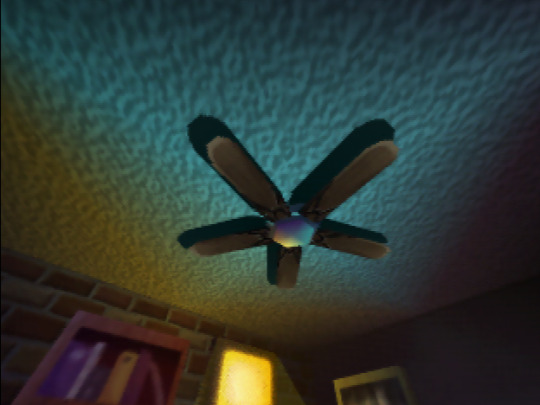
Left, Godot. Right, N64. All of the texture resolutions either stayed the same, or got BIGGER thanks to the different texture formats the N64 provides. Simply put:
THE SCENE LOOKS BETTER ON THE ACTUAL N64.
ALSO IT RUNS AT 60FPS. MOSTLY*. *It depends on the camera angle, as tried to order draw calls of everything in the scene to render as efficiently as I could for most common viewing angles. Even then there are STILL improvements I know I can make, particularly with disabling the Z-buffer for some parts of the room. And I still want to add more to the scene: ambient sounds, and if I can manage it, the particles of dust that swirl around the room. Optimization is wild, y'all. But more strikingly... fulfilling a childhood dream of making something that actually renders and works on the first video game console I ever played? Holy shit. Seeing this thing I made on this nearly thirty-year-old console, on this fuzzy CRT, is such a fucking trip. I will never tire of it.
46 notes
·
View notes
Note
On the topic of bits, I have heard that certain game uses different bit counts for maintaining different data of the game. How often decide which bit count (16/32/64 bits) goes to each data counter, and why don’t 64 bit games just use 64 bits for everything?
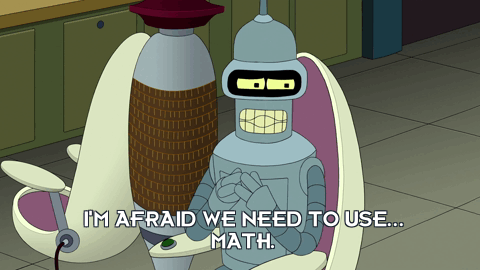
Some readers may not realize it, but you're actually asking a math question here. A bit is a value that can be one of 2^1 = two different values - 0, or 1. Thus two bits can represent up to 2^2 = four different values - 00, 01, 10, and 11. Three bits can represent up to 2^3 = eight different values - 000, 001, 010, 011, 100, 101, 110, 111. 10 bits can represent up to 1,024 different values, 16 bits can represent up to 65,536 different values, 32 bits can represent up to 4,294,967,296 different values, and 64 bits can represent up to 18,446,744,073,709,551,616 different values.
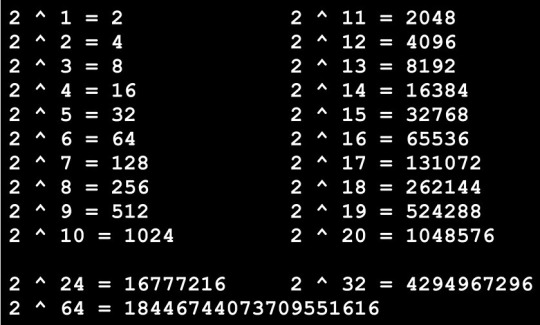
As you can see, 64 bits has a much larger range of potential than, say, 8 bits. However, just because it can store a lot of different values doesn't mean that you want to use 64 bit values everywhere. Imagine that I'm working on a game that has committed to four playable races - dark elf, hot elf, keebler elf, and santa elf. If I used a 64 bit value to store the player character's race, I'd wasting a large amount of that usable space - I really only need two bits to represent the four different possible races on a character so I would essentially wasting 62 bits of memory to store that one value. However, locking myself in to two bits for the player character race means that I'm also committing to never adding a fifth supported race (e.g. hers elf) for the lifespan of the game, because I would need additional bits to represent the fifth race. If I were forward-thinking, I might split the difference and give myself four bits (16 total races, room for up to 12 additional races) for the lifespan of the game.

Your question topic is known in programmer space as "bit packing" because the most efficient solution is to use the fewest number of bits possible to store the data. This way we don't waste computing resources that could be utilized elsewhere. A lot of clever engineering is about utilizing facts we know about the game's design (like the number of supported player races) and using that to shave down the needed bits to represent the data. This usually results in immediately improved performance and problems down the line if the game continues for years and the old assumptions get broken (which is often what happened when many old live service games needed to convert from [32 to 64 bits]).
[Join us on Discord] and/or [Support us on Patreon]
Got a burning question you want answered?
Short questions: Ask a Game Dev on Twitter
Long questions: Ask a Game Dev on Tumblr
Frequent Questions: The FAQ
57 notes
·
View notes
Text
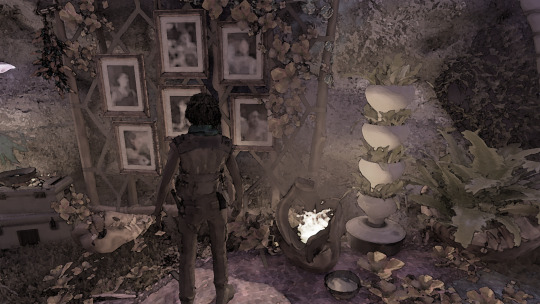

Lest We Rest Upon Our Graves | C11

It took a while before Alma left the makeshift office. She wrote up the report for Max anyway, detailing her avatar’s cause of death, the connection to the circle of ancestors to allow a few Na’vi to look into her memories (without the reasons why, irrelevant) and her subsequent avatar’s death and her experiences of that and the fallout since.
Everything she could think of.
It made burning time quite well, avoiding people and providing for the research quite well in her report and it was quite sizeable as well. Something she hoped would be useful for the future of the Resistance’s Avatar users. Once she passed she was sure she could get Nalin to fill in the blanks; she didn’t intend to take her head monitor off so they’d still get the data without her body.
She did stop once she complied enough files for High Camp, the data was too big for a transfer so they’d have to pick It up. However, her right arm was cramping badly with sharp pains up and down her bones, her other finger massaging the tendons mostly, being careful with how hard and where she pressed her fingers to relieve the tension as she headed away in search of So’lek although took a detour to pick up a fresh icepack for her arm.
She didn’t need to go too far but the sight of Kìoetey and Ri’nela standing with So’lek almost made her turn back around but she bit back her instinct to bail and continued to path towards him, not looking at the Sarentu kids although she noticed when the shift in their body language when she was noticed.
“So’lek, Can I have a word?” She asked. “I’ve updated High Camp on the success of the battle the Na’vi and the resistance have but I’ve got news.”
So’lek’s head tilted though he eyed the two Sarentu briefly. “Privately?”
“Preferably.”
Ri’nela clicked her tongue. “I will talk to Teylan, it will be good to update him on what’s been going on in his absence.” She touched Kìoetey’s arm.
With a lingering look, Kìoetey nodded and followed her away.
Alma led So’lek to the quieter side of the base before she took a slow seat down on an empty weapon’s crate with a heavy sigh.
“What news have you brought me?” So’lek asked as she settled down.
“The man who led the battle at the Hallelujah Mountains, Colonel Quaritch has returned from the dead in the form of an Avatar” Alma stated very bluntly.
What news he had been expecting, it was clear So’lek certainly hadn’t anticipated that. His posture tensed right up, ears pinning down and his tail rose but became motionless as he processed her words. It took a few seconds before he rebooted enough but she sensed his rise of internal rage behind his mask.
“How.”
“Max believes that the RDA used the avatar link-beds to scan the minds of soldiers, Quaritch and his unit, and preserve them as the RDA grew avatar bodies on the trip back to or from Earth. The copied minds were put into the empty bodies.” Alma explained the basis, doing some logical leaps of thought to come to the conclusions given she knew a lot of the link beds given she spent 32 years in them.
So’lek’s tail lashed, his hands tense at his side. “They defy nature with these creatures.”
“Their presence has pushed Jake to go into hiding to preserve the Omatikaya clan, as the unit can slip through Eywa’s defences.” Alma carried on, “My concern isn’t Quaritch’s team, So’lek.”
So’lek refocused back to her intently, lips pressed together. “You believe more dead humans will take on false shells?”
“Specifically, Harding and Mercer. As humans, they’re a threat but… as Avatars, or Recoms, as Max calls them, they’ll become a bigger threat.”
His eyes narrowed but he could understand the threat now. “We cannot let that happen.”
“Harding may know. I want to arrange a meeting with her before her death. She won’t talk to the Na’vi but she might slip up if I talk to her. She and Mercer were here for weeks before coming to the West Frontier.” Her being on drugs might have loosened her lips so she had to take her chances.
“I will talk to the sisters.” He looked very determined as he said this.
Alma nodded, mildly regretting the motion as it made the pain in her head spike a fraction. “Let me know when you’re set.”
So’lek nodded. “Anything else?”
“I’ve asked Max to bring some more medical supplies from High camp if it’s possible. Not sure if they’ll take the trip or not so it’s a wait-and-see. They’ve got a long way to go and lots of RDA dodging to do so I’m not confident they’ll be here fast. If they do.” Alma wasn’t sure. “Maybe they’ll bring another doctor down to help Nalin. She needs some help.”
“We will keep an eye out then.” So’lek didn’t look thrilled but the resistance needed more help and support. Even with High Camp being that far away.
Maybe she’d see, maybe not.
-
Alma settled back into the quiet corner with the monitor again, briefly going over her prepped data and downloading it onto a newly wiped tablet from their haul and putting a post-it-note on top with: ‘For Dr Max Patel’ on the front and shoved it into the draw.
Her aloneness didn’t last long before… a tall, familiar blue figure seemed to anxiously look in.
“Hello?”
Alma gave him a tired smile, waving him in. “Come in, Teylan.”
He came in, looking uncertain but mostly around than at her as he entered, taking in her little office space with some curiosity but she held his gaze as he finally seemed to find the confidence to look at her sitting there.
“I’m…not used to you being that small.” He remarked, “I miss your other body… the you that I know.”
Alma hummed. “Me too.” She spared a look down at herself. “I’m not exactly used to being human. Got… so used to the other body.”
“Ri’nela told me what happened to it.” Teylan frowned. “everyone seems happy it happened but..i don’t know.”
Alma swallowed thickly, her hand coming to her side. “They think I deserved it. I…don’t know myself if that’s true or not.”
Teylan looked uneasy. “It’s…scary to think Nor would do that to anyone. Would… do you think he would have hurt me if he found out what I did?”
Alma rose to her feet slowly, though he seemed to shy away from her a little so she halted her steps, trying hard not to feel the sting of his weariness towards her. “No.” She answered firmly. “You are Sarentu. He wouldn’t harm you.”
“But he killed the other you?” Teylan seemed to struggle with that. “You were our teacher. You looked after us.”
“He knew what I was underneath that skin. Not Na’vi. His…resentment of humans grew into a fire.” Alma assured. “Why don’t you talk to Ri’nela about this concern you have? She may have better answers.”
“I didn’t want to bother her. She is so busy and… I’m still trying to understand all that happened here. It’s so much.” Teylan hunched a little. “She told me…what you did as well. To us. How we came to TAP.”
Ah. He was still trying to process it still and coming to her to see for himself. Alma looked down at her desk a little at that.
“I know it’s a lot to take in, Teylan.” She started. “I didn’t…know what Mercer and Harding were going to do to the Sarentu when we got there. I thought it would be peaceful like it had been with the Kame’tire clan. I was wrong. I couldn’t stop them. Harding wouldn’t listen to me. They planned behind my back on the massacre to ensure they’d get you.” She sighed deeply. “That doesn’t erase my part in it. I know that. I am so sorry that I was part of it and for keeping the lie up since.”
Teylan was frowning at her, eyes wide with uncertainty.
Alma carried on. “I don’t expect forgiveness, Teylan. Ri’nela and Kìoetey have told me as much and I know they’re still processing it. Take your time in how you want to…handle it.”
Teylan let out a shaky breath. “It’s…all confusing. I don’t know what to feel. They… they forgave me for what I did. What…I did led to some of our friends dying. But… they’re not willing to forgive you? I don’t understand the differences. Shouldn’t they forgive you if they’re willing to forgive me?”
Alma didn’t know how to answer that. Not really. He had some level of logic to his understanding but… she supposed there was a difference that he couldn’t see.
“I can’t answer that question, Teylan.” Alma sunk back down into her chair, her hand coming to massage her temple. “I don’t have the answers there.”
Teylan remained quiet for a moment, mulling to himself. “D-Does the resistance hate me? For what I did?”
Alma didn’t know the answer to that, not really. She hadn’t interacted a lot with the crew here since her return to base. “I don’t know. I doubt it. Most of them understand. Jin-young may need more time to accept your presence. Alex may be a little tense but… it’ll take time for them to process.” She dropped her hands from her head. “Don’t rush, Teylan. You have all the time in the world to heal those wounds.”
Teylan considered her words thoughtfully. “I suppose. It’s going to take a while but…I suppose I have to try and work hard to make it up to the Resistance.”
Alma nodded. “Indeed.”
Teylan looked ready to leave before he tilted his head at her. “You’re hurt?” His yellow gaze was low, she looked down to see him looking at her arm. The distinct bruise was still dark as ever and the tell-tale shape wasn’t hard to hide.
Alma ducked it under the desk uncomfortably. “it’s nothing. A…misunderstanding between me and Kìoetey—”
“Kìoetey hurt you as well?”
“It’s nothing, Teylan,” Alma emphasised, more sternly. “I’m fine. I just lost my splint to cover it for now.” Maybe Nalin took it but who knew where it went on a day like today?
Teylan didn’t look convinced but he recognised a dismissal when he saw it. He turned and scurried away. Alma let out a steady breath, letting her arm come to rest back on the table, her hand touching over the dark bruise and delicate and sore skin.
-
Kìoetey was…relieved to spend some time just resting in the peacefulness of the morning. Still morning. Being up so early, the fight had been over within the hour and now… they were still so many hours in the day. Helping Nalin with Harding had been a relief.
Nalin didn’t need to know their presence there was due to Nesim’s caution in case Nalin opted to help Harding escape. Kìoetey knew the human woman wouldn’t but she understood that Nesim was still riding high off her victory and trying to ensure that Harding had no means of escape. It settled some…contentment to see Harding captured.
Harding had hurt them a lot growing up. So what if she was Mercer’s dog but she still did a lot more than what was asked of her to give them hell growing up. She had helped murder her people, dug them out of their hiding spots and handed them over to Cortez the day they were stolen and caged. Abuse that continued for all of them, differently. Nor had his hands broken, Harding had overseen the beating of Teylan when he had wet his bed… held Okni down while they shaved her head for disobedient weeks before the girl passed to Eywa.
Mercer was dead and there was relief. Now with Harding, it was the last of their problems to go. Almost. But the worst of their past was going to go.
Kìoetey wasn’t sure if she wanted to be there when Harding’s death came about. To see her death, to witness her body fall to the ground… it was a lot to think about. Personally, she’d rather have her killed in fair combat, if she thought for a moment Harding would play fair. What the Zeswa planned, she had an inkling but didn’t know for sure.
She had time to think before Harding would die so… she’d see.
Kìoetey sat with a selection of beads and flax, mostly letting her hands work and mind wander as she crafted a small armband for Teylan; something to get him started back as Sarentu. Something small and basic but a start; she wanted him to add to it himself.
He hadn’t made a start on a new songcord and… she wasn’t sure if he was ready to start creating one but this had to be a start; she could introduce the cord later in the week once festivities died down and they could find a new normal. The RDA were still about, even with Mercer gone. Ardmore no doubt had backup plans once the news hit she also lost Harding and the evacuating humans.
She wasn’t alone. Ri’nela was taking a break as well, looking to be adding to her songcord quite peacefully but the dent between her eyebrows was not noticeable.
“<Is everything alright?>” Kìoetey finally asked
Ri’nela sighed deeply, lowering her cord to look at her tiredly. “<I don’t know.>” she admitted. “<I keep…thinking more on Cortez now that Mercer is dead.>”
Ah. “<Can I ask what about?>”
Ri’nela hummed a little in consideration. “<She’s…been ignoring me when I’ve crossed paths with her. Wondering if she’d try to open up a conversation or say something to me if given the chance.>”
“<Is that upsetting you?” Kìoetey asked in concern. It did sound a little…odd for Cortez to do that.
“<I would have expected that towards you, Kìoetey.>” Ri’nela pointed out, “<not to sound harsh but she has more of a reason to keep her distance with you.>”
Kìoetey winced a little but she inclined her head in agreement. “< I know>”
“<Me? I don’t know why she’s giving me the same treatment. After her avatar sided, she was a following shadow. An unwanted cloud spilling nothing but apologies and now she wants nothing to do with us.>” She huffed out a little.
“<I did hurt her>” Kìoetey pointed out with a twinge of guilt. “<Her attempts to us have solidly stopped after that.>”
That and the fact the woman had literally moved to a field lab as well made it hard to reasonably cross paths. She was only back for a short time before she no doubt fled back to the field lab. Kìoetey could wait until then because… well it was far easier to get to her and Cortez had less place to run off into out in the open and it was more private. She could work with that.
“<I had no part in that.>” Ri’nela set her cord down neatly. “<Please, you’re sounding like you’re defending her behaviour here.>”
“<I’m not defending her, Ri’nela. She shouldn’t give you the cold shoulder because of me but humans respond differently than Na’vi. She told me herself when I apologised to her that she didn’t feel safe around me. Perhaps that fear has extended to you as well?>”
Ri’nela eyed her for a moment then scoffed. “<Cortez scared of us?>” She shook her head, muttering a little. “Unbelievable…”
Kìoetey didn’t say much on that and didn’t want to side in either direction. Ri’nela didn’t need to hear that. So, she picked up her needle to continue on with her sewing.
-
The Circle was cold as she waited for So’lek to convince her in but Alma listened and waited with the guard outside as their voices carried.
“<There had been news from our Eastern resistance. Harding may know more.>” So’lek explained to Nesim and Minang. “<I wish for Cortez to interrogate her as they’ve had a working history before Cortez defected from the RDA.>”
“<News of the Sky people?>” Nesim sounded interested.
“<Harding’s position is called a Colonel. High ranking with a lot of authority over her warriors. She has been in contact with General Ardmore recently, the sky person leading the assault on Pandora in the east where they primarily operate from.>” So’lek further explained. “<Harding will not respond to Na’vi but a human might get more of a response.>”
There was a long pause and their voices quietened as the Olo'eyktan spoke to the Tsahìk in small consideration before Nesim spoke up.
“<You will oversee the interrogation. You understand the Sky people’s language, I do not trust humans alone with her fully. We cannot risk losing her or allowing her to escape. We will wait for what information is provided.>”
So’lek agreed and Alma soon followed the Olo'eyktan and So’lek through to another tent far off. She figured Nesim probably hadn’t initially recognised her face but from the few looks sent her way, she hoped it dawned on her that she was the Dreamwalker they had seen and interacted with before. So’lek had stopped referring to her by her first name which didn’t help.
Not that it really mattered.
So’lek pushed through the tent first, startling the occupants inside from their slumber or general waiting.
Harding was there, bound and patched up and her foot looked to be strapped into some sort of brace which worked in keeping her leg in place. She was dressed down, sweat did coat most of her pale skin and her arms looked to be raw with the rubbings of her binding already; particularly the one with her burn scars. She didn’t look good.
Harding’s eyes narrowed as she entered, her eyes dropping to take her in though there was no mistake in the woman’s nose upturning at the sight of So’lek.
“What do you want?” She demanded tightly, “Come to finish me off, Blue?”
So’lek let out a dry chuckle, pleased to see Harding not looking so good. “I do not get the honour.”
Harding scoffed a little. “Looks like you’ll get off watching.”
Alma tisked a little at that, drawing the attention back to her so she stepped forwards. “I’ve never heard you speak so crudely, Harding. Drugged up that much?” She slowly sat down on the grass in front of her, the motion thumping her skull a little but she ignored that. “Or is the pain getting to you?”
“What do you want?” Harding demanded, “I’ve gotta catch up on my beauty sleep before one-eyed-willie makes me sing and drop.”
“So you know your fate?”
Harding scoffed a little at So’lek. “I’m a captured colonel in enemy territory. I’m not stupid. If the Blues negotiated with the RDA, demands would have been made well for the proper care of me and my men until my release back. I know the Blues don’t negotiate and don’t hold prisoners for long.”
Alma sighed loudly before this could progress into something less productive. So’lek humphed a little and stepped back, allowing her the stage so to speak.
“Look, Harding, I can’t do anything or offer anything to get you out of your situation.” And wouldn’t “But what I can offer is this; you answer some of my questions and I’ll see it that you and your men here get a proper burial” She offered instead. “The Zeswa won’t tend to your body and will leave it where you fall to the mercy of the animals you helped poach.”
Harding stared at her for a moment then snorted. “Likes that’s an appealing deal.”
“It’s the only one I can offer. You’re not getting out of this.” Alma pointed out. “You have caused too much harm to the Zeswa. Lost many of their people to the actions of you, Mercer and the RDA.”
“Thanks but I always knew I was going to die a horrible death and be left in the mud. Hardly tempting me into disloyalty and betraying my own race.” Harding’s shoulders lifted a little as if trying to shrug. “Unlike you, Cortez.”
“You’re not going to die a martyr. You’re not dying for the RDA. Your death is about your poaching of the Zarkru. Not RDA ideals.”
Harding didn’t look convinced. “The RDA will spin my story to be what they need it to be. They may recover my bones one day which will see my death at the hands of Blue freaks.”
“Spears, Actually.” So’lek correctly coldly. “Na’vi won’t taint their hands with your blood when their weapons will suffice more effectively.”
Harding stared at him for a long moment. “I will take my secrets to my grave, Cortez.”
Alma didn’t let her words draw too much power away but she figured they needed another approach. Less direct.
“Your ranking in the RDA has allowed you plentiful amounts of information on this land and of Bridgehead. You—or should I say, Mercer, had plans to extract oil on a large scale on the western Frontier which meant you had contingency plans on handling the backlash from the Zeswa, Aranahe and the Kame’tire clan when they came for you. What were they?”
Harding hummed, noncommittally. “Chances are the numbers would have dwindled enough to not be of concern beyond leisure hunting or pest control. Everyone loves a good trinket on their shelve. Who cares if it’s off some corpses?”
So’lek hissed quietly at her phrasing.
Harding just smirked a little at the warrior. “Why are you so shocked? You’ve seen my art.”
Alma held a hand up to stop So’lek from answering; she needed the power here. Not his interference or provocation.
“Mercer had no loyalty to you. You probably already knew it otherwise you wouldn’t have abandoned him at his base. Fine, if you won’t talk about the rest of bridgehead but surely you can talk about something useful. Your death, what happens to all the money that comes from the stuff you already sent off?”
Harding shrugged, “What of it? My next of kin will get what they need from me.”
“From what I know, you have no one.” Alma rebutted. “No family. No children. No one to take your belongings or to morn for you. You’re just a number on the list of the dead. Will the RDA take the money? Seems likely. They probably won’t have to worry about the backlogs of pay either; they keep your earnings. All of it.”
“<This topic is hardly relevant.>” So’lek remarked, “<We waste time with this.>”
Alma ignored him. “We found the other poachers from the splinter groups so we know there were a few inspired by your work. I knew some of the Proceeds go towards the RDA for the supply drops back to Earth. I take it you must have…investments into something for it to be useful. Even after your death.”
Harding rolled her eyes a little. “So what if I do, Cortez? That’s hardly any interesting for the resistance to know about.”
Alma’s head tilted but she couldn’t help the smile on her lips at the implication that had. Very few things that came from that. Investments beyond one’s own life with no next of kin?
“Just…curious. You must handle a lot of your people's pay to make the calls on those bagged and tagged. Are all of these your unit or just part of the ship?” Alma nodded to the other captured men.
Harding said nothing, just raised a bloodied eyebrow.
No matter, they’d get the details from the black box. That could provide them a unit to look out for when the avatars were grown.
“I spoke to Sully’s team. They told me of this new unit the RDA has. Have you met the new Colonel Quaritch?” Alma asked, “I bet he’s a…bit taller now.”
Harding snorted a little at that. “Why are you asking about him?”
“It seems a bit like a novice. A whole new Avatar program, only…they don’t have a driver. Seems…exciting, even.” Alma sighed. “How are they made? Or… the minds of the soldiers preserved? I wasn’t aware that the RDA even had that technology.”
Harding raised her other eyebrow again. “You sound jealous, doc.”
“Why wouldn’t I be? I always preferred my avatar. That was no secret.” Alma spared a look down at herself then shrugged.
Harding chuckled at her, a nasty smile on her face. “I wondered why you’re not in your avatar. It’s dead, didn’t it, Cortez? You’re dead.”
There was an undertone of implication there which… didn’t surprise Alma to know that the colonel knew the risks just as much as Max did. But she didn’t want So’lek to know that. He’d tell the Sarentu. She couldn’t have that.
“Accidents happen. But we’re not here to talk about me.”
“Why not?” Harding seemed to get marginally chipper now, “We both know your self-hate of your own body came from your kid dying before she was born. What makes you think that was an accident.”
Alma’s jaw tensed right up, eyes narrowing at her but she felt a shiver at the implication. “My daughter was stillborn.”
Harding snorted. “Mercer was never above having things in his way killed. You think you’re any different because you were human?” She scoffed at her. “Like he would let you simply leave with a kid and leave him with the blue scraps!”
“<Cortez?>”
Alma swallowed her feelings, now was not the time to let her words get to her. It was well over thirty years since she had touched that box and she had no intention of opening it in front of the present company. Harding was trying to get a reaction.
“The new avatars,” Alma started, her voice stern, “how many?”
Harding continued to smirk still. “None of your concern.”
“Does Mercer have an avatar like this new squad?”
At that, Harding seemed to laugh, wincing a little at the pain the motion brought her. “Hell no. He couldn’t pass the tests required, mental or physical.” She shook her head. “He’s a psycho.”
Alma rose slowly to her feet, bringing her arm to her chest to avoid leaning on it. She brushed the grass from her clothes as she fixed her former colleague with a long look. “I look forward to meeting your recom, Colonel Harding.”
She didn’t dare look at So’lek as she turned and headed towards the exit.
“No you won’t,” Harding called after her almost gleefully. “You’re a dead woman, Cortez!” Alma didn’t stop at her shout, her voice meant to sound loud now like a threat. “You’re a dead woman walking, Cortez!!”
“I know…” Alma whispered to herself, exhausted already still.
Masterlist
#avatar#avatar au#avatar james cameron#avatar frontiers of pandora#frontiers of pandora#so'lek frontiers of pandora#so'lek#sarentu#nor#teylan#afop#ri'nela#alma cortez#angela harding#nesim#minang#zeswa clan#avatar rda
12 notes
·
View notes
Text
Jango Fett and Walon Vau: Age Difference and Childhood Trauma
Edit: other part(s): The Laws, Orders, Jaster Mereel and True Mandalorians (pre-Galidraan)
For @delkios
This won’t be a traditional analysis as sadly, there isn’t enough data about the relationship Jango and Walon had, especially since Republic Commando book series and game tie-in material did not provide any scene in which those two characters directly interacted (in contrast to Jango and Kal Skirata, who had a chapter in Triple Zero). Due to these limitations, the following work took the shape of investigation and case building more than anything else as I was forced to rely on information from third parties whose opinion was often subjective and knowledge incomplete, the circumstantial evidence and even the comparisons to present how alike Jango and Walon could be, as similarities often connect people.
The collected data is separated into categories focused on different aspects. Each category has its direct quotes or comic book frames from available source materials while some examples get an additional commentary and/or point of interest if the topic discussed may be expanded upon by secondary sources that do not directly concern the relationship between Fett and Vau, but which provide a broader picture of the issue.
AGE DIFFERENCE
A bit of established chronology based on Jango Fett: Open Seasons, Fact Files and Jedi Master Magazine:
BBY - Battle Before Yavin
22 BBY - Attack of the Clones / Battle of Geonosis - Jango’s death and start of Clone Wars
32 BBY - Dooku interrogate Jango’s former allies, the best known example: Silas (as stated by JF:OS issue#2 “ten years before Geonosis")
44 BBY - Battle of Galidraan[1]
52 BBY - Battle of Korda VI / Jaster Mereel death (as stated by JF:OS issue#2, “twenty years ago” with date of Silas’s torture as starting point)
58 BBY - death of Jango Fett’s parents on Concord Dawn and the orphaned boy joining Jaster Mereel / True Mandalorians (as stated by JF:OS issue#1, “the events takes place 36 years before Attack of the Clones)
The comics and Fact Files did not provide data about year of Jango’s birth however Star Wars Jedi Master Magazine places it in 66 BBY:
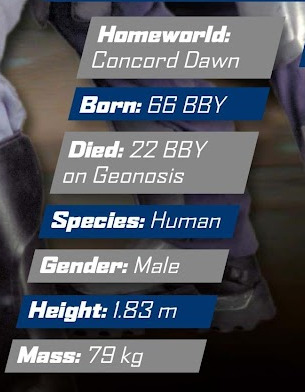
[1] the date for Battle of Galidraan is actually not that clear, as comics issue#3 places it “twelve years before Geonosis” which would mean 34BBY and Jango being 32. However Fact Files vol.3 #14 states “Fett led the Mandalorians for eight years, during which the hunt for Vizsla was never far from their minds”. Similarly, the comics too imply that between Korda VI and Galidraan eight years has passed (Silas said “twenty years ago” for events of Korda, Galidraan was supposedly be “twelve years ago” however comics used Geonosis as reference point, instead of 32BBY - the date the “present” story takes place, as Dooku’s memory about Galidraan was told in that year. Otherwise there would be little time for Jango to gain a reputation as Bounty Hunter, as he said in the same comics (issue #4) “I rotted on spice transport for years.” - the plural form means at least two years, so he would be freshly out of slavery. The lore usually places Galidraan in 44BBY so I prioritize the eight years between Korda VI and Galidraan over comics flawed calculation.
The collected data allows us to establish that Jango was:
8 years old during attack on his family on Concord Dawn
14 years old when Jaster died on Korda VI and Fett became leader of True Mandalorians
22 years old when his True Mandaloris were killed by Jedi on Galidraan and he was sold into slavery
34 years old when became DNA donor and father of Boba
44 years old when killed
There is a little well-documented chronology for Walon Vau. From the bits of information, we can established that
Walon run away from his biological family at young age
“That strill had stood by him since boyhood” [Republic Commando: True Colors]
and
“Mird has been with me since I joined the Mandalorians” [Republic Commando: Triple Zero]
or
"Vau," he said carefully, "is still a fit man. A soldier since childhood, just like you and like Kal'buir. [Republic Commando: Triple Zero]
Of course, Vau joining Mandalorians does not necessarily mean joining right away True Mandalorians.
he was part of Jango’s True Mandalorians at least just before Galidraan
Vau didn’t meet Skirata’s eyes for a moment, but he glanced at Jusik. “I could have been at Galidraan, but I wasn’t, and I never forgot that. Not my fight. Should have been my fight.” [Republic Commando: Order 66]
So Vau knows Jango at least for 22 years (since 44BBY to 22BBY, the start of Clone Wars) however depending on interpretation, True Colors may implies, Walon could recall Jango’s undernourished appearance as a youngster:
Vau looked at Mereel in profile and tried to see Jango in him, but it was surprisingly hard. Odd as that might have sounded to an outsider, it was true: the clones usually didn't remind him of Jango Fett at all. Part of that was living among them for years, and becoming blind to the superficiality of appearance, but there were many ways in which they didn't even look like their progenitor. Jango - born of parents who lived hand-to-mouth, undernourished as a youngster - hadn't been much taller than Skirata, but the Kaminoans had managed the clones' nutrition carefully from the day the egg was fertilized, and they'd turned out tall and muscular. In a hundred and more ways, they weren't exact replicas of Fett.
From vocabulary.com:
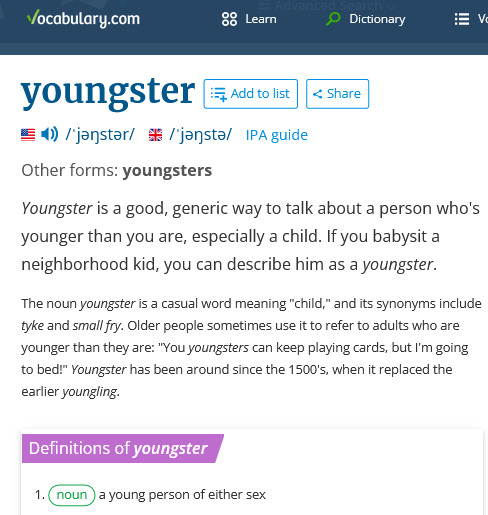
Youngster is a good, generic way to talk about a person who's younger than you are, especially a child.
Jango in 44BBY was 22 years old, and Mandalorian for 14 years, so it is possible that due proper training he gained appropriate body weight and was better nourished - if Walon knew Jango only as an adult man, would he had so hard time to see Jango in clones he trained since they were two years old?
For a better picturing this matter, below a reaction of people who knew Jango only as an adult man and already met a clone troopers:
Attack of the Clones by R. A. Salvatore
Jango Fett walked in, dressed in simple shirt and trousers. Obi-Wan recognized him immediately, though he was many years older than the oldest clone, his face scarred and pitted, and unshaven. His body had thickened with age, but he was still physically imposing, much like many of the old gutter dwellers Obi-Wan encountered in far-flung places. A few extra pounds, sure, but those covered muscles hardened by years of tough living. Tattoos crossed both of Jango's muscular forearms, of a strange design that Obi-Wan did not recognize.
The Cestus Deception by Steven Barnes:
If Obi-Wan was entirely honest with himself, he had to admit that large groups of clone troopers made him slightly uncomfortable. Easy to understand and explain away. One factor was the fact that they were the absolute image of the notorious bounty hunter Jango Fett, who had come within a hair of killing him on three separate occasions. More disturbing still was the fact that, although genetically human, they had not led human lives: clone troopers were born and bred purely for war, without the nurturance of a mother's embrace, or the safety of a father's loving discipline.
or
As he came out of his thoughts, again he had the sense that she was staring at him, and this time he felt uncomfortable. "Why do you look at me that way?" She shook her head. Then, as if she thought herself the biggest fool in the galaxy, she shook with peals of deep, rich laughter. "I suppose I keep expecting you to remember me. That's crazy, of course." She laughed again, and Nate just felt more confused. "You have to pardon me." "I don't understand." "I suppose I should have told you before. I knew Jango Fett." He didn't quite believe what he'd heard. Worse, he wasn't sure how to react. "You did?" She nodded. "Yes, twenty years ago, in quite another life. Seeing you was kind of a shock. When you took those helmets off-wow!" Her laugh was throaty and vibrant. "It's him, all right, and just about the age he was when we first met." Nate's head spun. "I should have expected that, I suppose. Certainly some of my brothers have also encountered people who had known him ... I've just never spoken to one."
As Walon said, living among clones for years made him blind to the superficiality of appearance, but I think it is safe to assume Vau knew Jango for longer than the established minimum of 22 years.
There is no proper date of Walon’s birth, however the books either mentioned he is past his prime
Boss stands his ground. "You can't carry it all on your own." "I can carry enough." I can haul a fifty-kilo pack all right, maybe not as easily as young men like them, but I'm motivated and that shaves years off my age. [Republic Commando: True Colors]
or Walon is outright called an old man, both by himself or other characters:
"You're conspicuous in that black armor, Sarge," Scorch said kindly. "It's worse than having Omega alongside. What say you back out of here and leave me to hold them?" If anyone was going to do any holding, it was Vau. "Humor an old man." He fumbled in his belt for an EMP grenade. "I stop the droids, you pick off the wets." Wets. Organics. He was talking like Omega now. "Then we all run for it. Deal?" [Republic Commando: True Colors]
or
"Walon, whatever we've said or done to each other before this moment, it doesn't matter. Cm vhetin. A fresh field of snow." Vau looked at him blankly for a moment. Maybe he knew how precariously Skirata balanced on the edge of his resources right then, but that craggy humorless face softened for a few telling seconds. "Cin vhetin." Vau grasped Skirata's arm in a vise-like grip. "Mhi vode an, ner vod." Vau seemed purged. He slapped his thigh plate, and Mird trotted after him into the galley. "Sorry about that, Bard'ika," Skirata said. It couldn't have been easy for the kid to hear all that bad blood about Jedi on this particular night. He might have turned his back on them and put on the beskar'gam, but they'd been his family, and some of those killed must have been his friends. Jedi were living beings, too; some might have got what was coming to them, but others were probably decent like Etain and Jusik. "We're tired old men, with tired old grudges."
or
Vau did his icy I-know-something-you-don't smile. "Sport-fishing isn't sport unless you run the risk of being caught yourself, is it?" "There's always relaxing on the beach," said the Rek. "Or a pleasant walk around the harbor." She seemed to have classed them as two old guys trying to rediscover their youth through destructive machismo, maybe with Mereel as the fit young minder who could haul them out of trouble. It was perfect: whoever Ko Sai had as a contact here-and she'd need one, if only to get hold of supplies- wouldn't be tipped off to the fact that Mandalorian bounty hunters were in town. [Republic Commando: True Colors]
or
"Someone has to pilot Aay'han, because those things won't have much range," Vau said. "And I'm volunteering. I had my midlife crisis about ten years ago, so you can go play boy racer this time, Kal..." [Republic Commando: True Colors]
Additionally Commentary:
The definition of a midlife crisis is a period of transition in life where someone struggles with their identity and self-confidence. It happens anywhere from 40 years old to 60 years old and affects men and women. A midlife crisis is not a disorder but is mainly psychological. It occurs when someone looks at where they are in life compared to where they think they should be by a certain age. Who is affected by a midlife crisis? Men and women can both experience a midlife crisis, but it may look different for each. On average, most people experience one between the ages of 40 and 60 years old, but you may have it before or after those ages, as well. [From acendahealth.org]
As True Colors takes place in the second year of Clone Wars - if Vau’s words were meant to be interpreted as fact - the midlife crisis would happen around second year on Kamino. Of course, Vau may be sarcastic here but he could also mistake depression for the psychological crisis as the book series often pointed out how time spent on Kamino was depressive for Mandalorian training instructors and Vau was no less affected by that. This actually can be supported by the same book:
Scorch is about twelve years old. He's also twenty-four, measured in how far along that path to death he actually is, which is the only definition I care about. He's running out of time faster than me. The Kaminoans designed the Republic's clone commandos to age fast, and when I think of them as the tiny kids I first knew, it's heartbreaking-yes, even for me. My father didn't quite kill the last bit of feeling in me.
Side note: if I calculate right, the clone commando training started in the second year (8 years before Geonosis, as around that time Kal Skirata showed up on Kamino and was soon to start training clone cadets. Logically, each batch should start their training at the same time, so the “midlife crisis” could easily happen when Vau started training too young children for Republic and Jedi as this challenged both morality and principles of Mandalorian culture.
Kal Skirata was said to be around 60 years old [RC: Order 66] and book series keep describing him and Walon as “old men”, so it is easy to assume the age difference between Jango and Walon was quite significant, most likely more than a decade. Depending when Walon joined True Mandalorians - before or after Jaster Mereel’s death - there is also a possibility he could help train Jango when Fett was still a cadet or at least knew him (if not just heard about him), as Jaster Mereel had a special spot for the kid:
Jango Fett: Open Seasons, issue #2:

Jaster Mereel: Make me proud, Jango. Jango Fett: Yes sir, Jaster. Montross: I think he sometimes forgets that you're not really his son. Hnh. That's dangerous. Clouds his judgment. And yours. [...]
Fact Files vol. 3 #14:

"Jango became a favorite of Jaster Mereel, something that didn't sit well with one of his men, Montross [...]"
Additional Commentary: It makes sense to think that older and/or more experience Mandalorian Mercs helped to train the cadets however it is worth to keep in mind that Walon Vau was introduced into story as specialist of interrogation and True Mandalorians in fact trained their members to endure tortures [Jango Fett: Open Seasons, issue #2]. This information comes from Silas, who was part of True Mandalorian first under Jaster Mereel's and later Jango's leadership. It is hard to tell when and how interrogation became Walon’s expertise, but if he took part in training of cadets, his training may as well be pretty brutal to endure. On another hand, if Jango spent eight years keeping the hunt for Vizsla in mind all the time, Vau could be one of the people responsible for gathering information about Death Watch from captured enemy soldiers or other suspects. If he was that good as books implied he was, this could make him a valuable addition to Fett’s army.
CHILDHOOD TRAUMA
[Prime source] Jango Fett: Open Seasons, issue #1
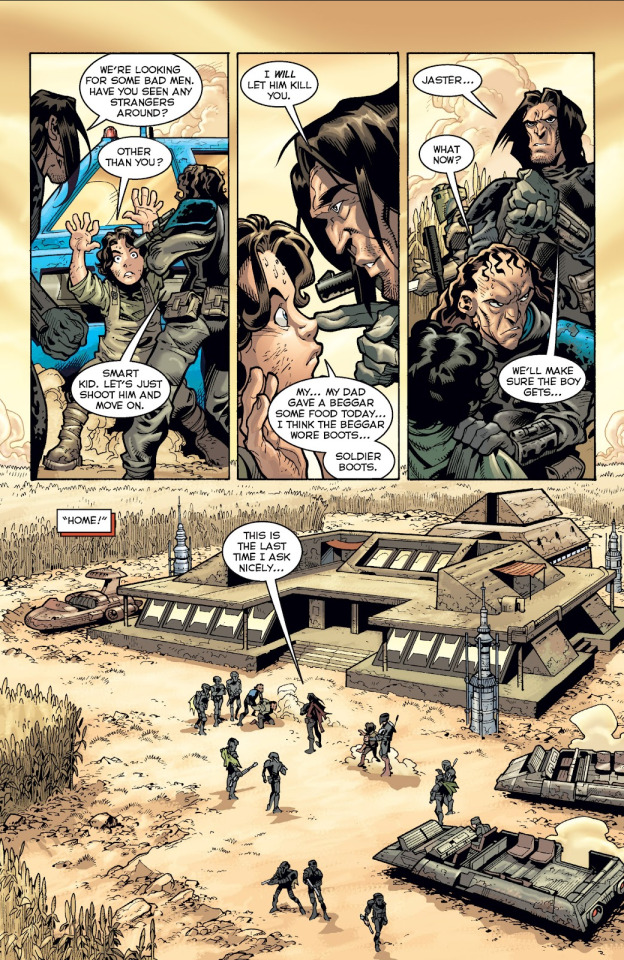
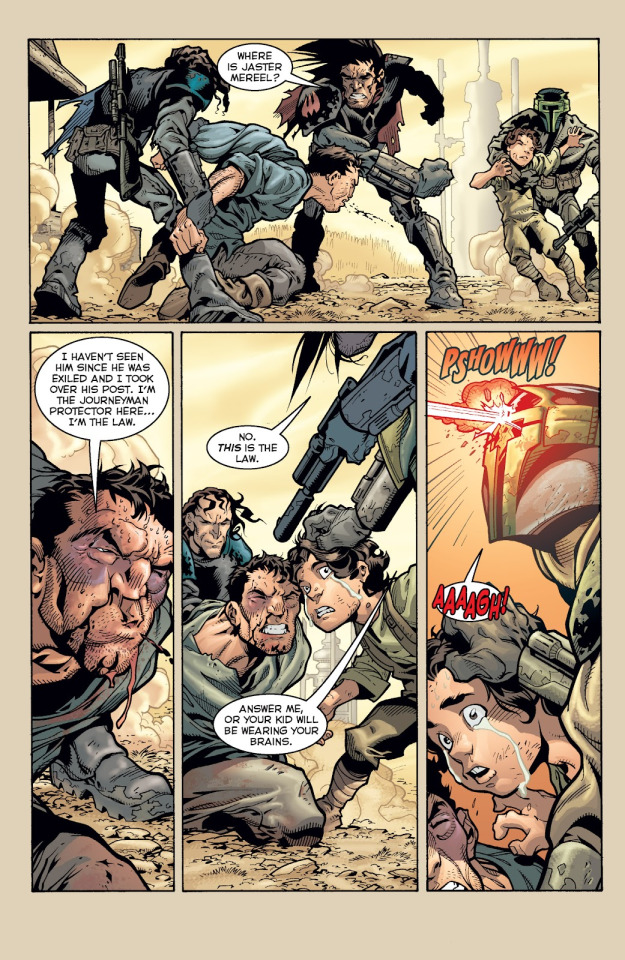
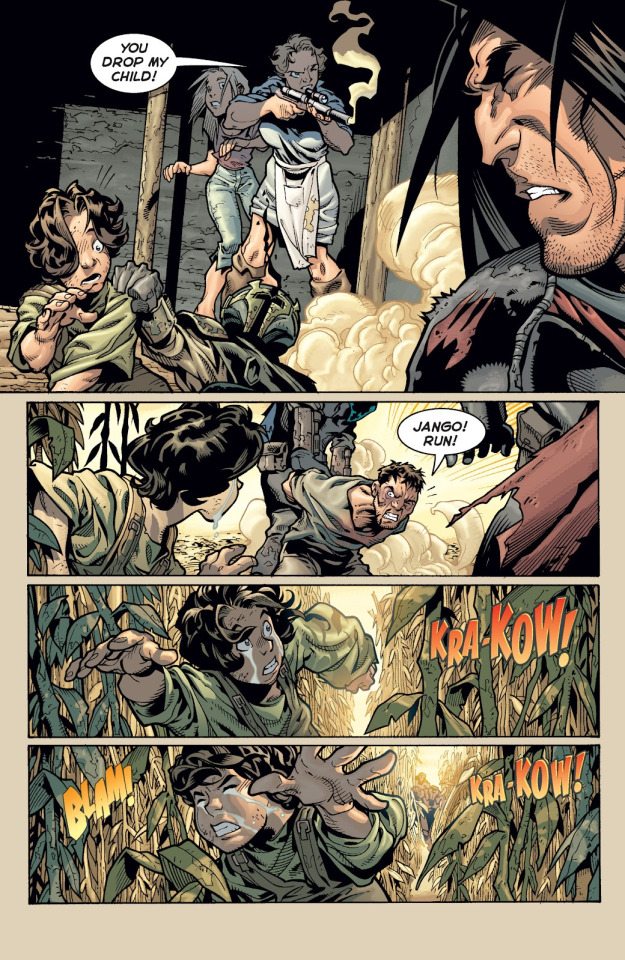
Imperial Commando: 501st
Jusik didn't know what to expect; he just knew that she'd been hurt, physically and emotionally. Jango had told Vau just the barest detail about the Death Watch punishing his father for harboring Jaster Mereel, and his mother shooting one of them dead so Jango-eight, maybe-could get away. That was the last he saw of all of them, his mother shielding fourteen-year-old Arla, his father on his knees yelling at him to run. Jango thought they'd all died.
Additional Commentary: For a supposedly the barest detail, the short description accurately presents what happened in original source [“Death Watch punishing his father for harboring Jaster Mereel”; “his mother shooting one of them dead” “his mother shielding fourteen-year-old Arla”, “his father on his knees yelling at him to run”], so maybe it is not Vau who get the simplified version from Jango, but Jusik from Walon?
For better contrast, below a story Jango told Zam Wesell:
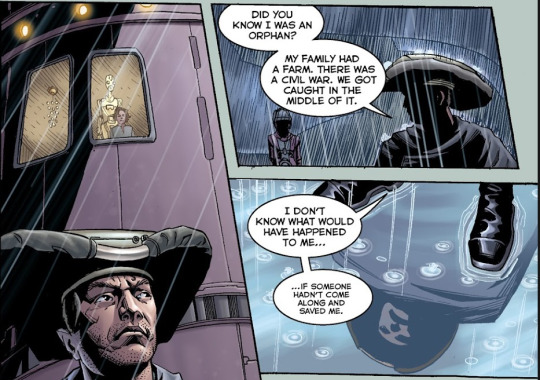
"Did you know I was an orphan? My family had a farm. There was a civil war. We got caught in the middle of it. I don't know what would have happened to me... if someone hadn't come along and saved me" [Source: Zam Wesell comics, 2002]
Additional Sources: Jusik and Kal Skirata were aware that Jango Fett had a sister in previous book (RC: Order 66), as this was their main motivation to abduct met by accident Arla Fett from the asylum:
"I thought I was a chancer," Skirata said "but Bard'ika, you make me look like a Neimoidian accountant. You know who that is, don't you? If she is who she thinks she is, anyway. Because she's supposed to be dead." "Oh, I know," Jusik said. In the last few years, he'd absorbed all he could about Mandalore and its people, both from Mando'ade themselves and from aruetiise who knew them all too well-like certain Jedi. "And that's why she deserves our help." "So who is it?" Vau asked plainly irritated. Mird watched the woman with head cocked tail slapping. "We'd better have a good reason for taking a psychotic killer with us tonight." "We have," said Jusik. "That's Arla Fett-Jango's missing sister."
In the same book, Fenn Shysa also seems to be aware about the fate of Jango’s biological family:
Shysa was making an awfully big assumption about Boba's willingness to take over where his dad left off. "Fett's got an older sister, you know. Arla." "No, Vizsla killed them all." "Not all." "Now you tell me. Are you having me on, Kal?" "No, ori'haat. I swear. Jango thought they all died, but the girl survived somehow [...].
It makes sense that Mandalorians, especially the survivors of True Mandalorians (and Jusik who learned from them) to some degree were familiar with their leader's past, however their knowledge doesn’t necessarily need to come from Jango himself.
Additional sources outright say or strongly implies Jango wasn’t willing to confide in others about his childhood trauma.
Internal memo penned by Hali Ke, senior research geneticist, Kamino, 27 BBY (source)
I have now logged many sessions with our prime clone Jango Fett, and concluded that he embodies his species’ contradictions. He is a killer many times over, ending the life of others without hesitation if paid to do so, yet his anger was obvious when I suggested he lacked morality. He is one of the most able, competent humans I have ever observed, remaining calm in situations that would leave most organics helpless with terror. Yet he witnessed horrors in his childhood that he will not discuss, and around which his mind has constructed apparently impenetrable barriers.
Jango Fett: Open Seasons, issue #2

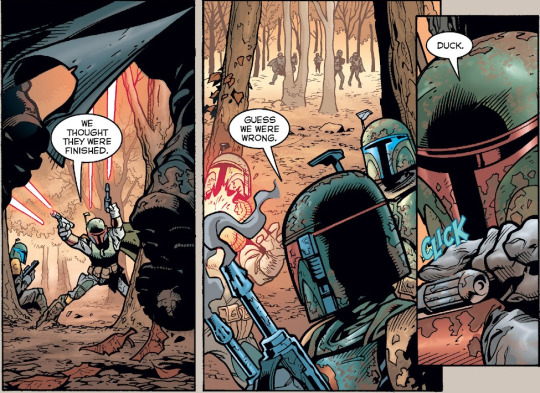
Important thing to note: Jango only described the enemy as “ex Mandalorians who split with Jaster Mereel years ago” instead of personal information like killers of his biological family. It could be due to being under enemy fire, however the fact that Silas has no clue who Death Watch was in the first place, strongly suggests that Jango did not mention his childhood trauma in any specific detail to him, while comics presented Silas as deeply loyal to Jango, both as first person to stand by him against Montross’ claim to leadership

and as a man who endured for a whole year a torture because he refused betray Jango and who used his last breath to ask Dooku (the torturer) to not tell Jango about his failure.
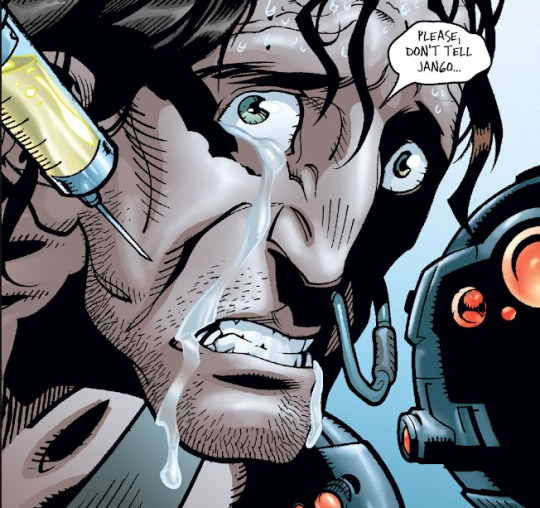
As Imperial Commando: 501st states, “Jango had told Vau” about his childhood trauma and there is no reason to think Vau lied about this to Jusik. So far, within the broadly understood Republic Commando series, Walon is the only mentioned character to whom Jango voluntarily confided about things he normally did not speak.
(Unless, as pointed in my additional commentary for Age Difference, Vau did in fact trained Jango to endure torture and he managed to break Fett to get this information from him during "exercise" while he simply omitted that detail when sharing his knowledge about Jango's childhood with Jusik. Personally I like more the implication of trust given to Vau what fits well with his role in Kamino program, however I feel obligated to mention this possibility as another interpretation.)
However when it comes to Vau’s own biological family and his aristocratic title, Republic Commando: True Colors says Kal Skirata was most likely the only person he told about before Clone Wars.
"What's in there, Sarge?" I'm not robbing for gain. I'm not a greedy man. I just want justice. See? My Mandalorian armor's black-black, the traditional color of justice. Beskar'gam colors almost always have meaning. Every Mando who sees me understands my mission in life right away. "Part of my inheritance," I say. "Father and I didn't agree on my career plans." Justice for me; justice for the clone troops, used up and thrown away like flimsi napkins. "The drinks are on you, then," says Boss, Delta's sergeant "If we'd known you were loaded, we'd have hit you up earlier." "Was loaded. Cut off without a tin cred." I've never told them about my family or my title. I think the only person I told was Kal, and then I got the full blast of his class-war rhetoric.
Additionally commentary: Once Walon and Kal joined their forces to provide clones a future outside the army, Vau started to mention his aristocratic family more often (sometimes simply to annoy Skirata). This of course does not cross out the possibility that Jango wasn't privy to this "secret", as Fett could easily learn that from other Mandalorians, like his mentor Jaster Mereel (if Walon already was one of his True Mandalorians while Jango was a young cadet himself), or even straight from Kal who was passionate about the topic enough to lecture Walon - something that was mentioned through the books on few different occasions and these two men knew each other for decades.
Republic Commando: Triple Zero
"Yes, we all know." Vau turned to Etain. "This is normally where he starts lecturing me on his ghastly childhood as a starving war orphan living feral on some bomb site, and how I just ran away to become a mercenary because I was bored with my idle, rich family." "Well, that saved me some time," Skirata said irritably. "What he said."
Thus it is up to debate, if Jango knew and if he knew then how he learned that and if he didn’t, why Walon did not mention it at all. There are potential possibilities like that Jango simply wasn’t interested in Vau’s past so he has never asked (the other, out-of-universe explaination is that the author did not had at that time outlined the plot-twist about Jango and Walon’s much closer relationship than Jango and Kal - the main character of book series since Triple Zero. This is the most likely the case, as Karen Traviss’ Legacy of the Force books that predate Order 66 pretty much ignore Jango & Walon relationship in favor of Jango and Kal mentions in Boba’s POV characters. But about that more later.)
[Next part coming hopeful soon]
#star wars#jango fett#walon vau#jango fett and walon vau#cienie's research#so far a) vau knows stuff jango wasn't willing to share#b) likely knew him as youngster#c) likely the age gap is quite bid maybe even more than decade#if jango was mereel's favorite (and treated as son) probably everyone who served back then knew or heard about the kid#as the boss' kid so who knows maybe vau and other older than jango mandalorians babysitted him lol just a thought#i should write about galidraan and related matters as next part but we will see if i will go with proper chronology or skip straight#to kamino era#sorry for bringing so much skirtata but he is the main character since Triple Zero and a lot stuff orbiting about him and his men#gives some good insight into jango and walon
44 notes
·
View notes
Text







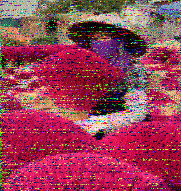


@swradiogram Thursday 1930 ET broadcast 9265 AM
t¼ aiÝSntgp Before RSID: <<2025-01-24T00:31Z MFSK-32 @ 9265000+1500>>
0iDiDts0 IOe hnypwsvmuTut F
Welcome to program 386 of Shortwave Radiogram.
I'm Kim Andrew Elliott in Arlington, Virginia USA.
Here is the lineup for today's program, in MFSK modes as noted:
1:41 MFSK32: Program preview (now) 2:51 MFSK32: NZ mayor objects to Trump 'split the atom' claim 5:35 MFSK64: NASA develops a 3D-printed antenna* 10:46 MFSK64: Images of the week* 27:40 MFSK32: Closing announcements
with image(s)
Please send reception reports to [email protected]
And visit http://swradiogram.net
We're on swradiogram.bsky.social now
And X/Twitter: @SWRadiogram
tnop tn
From AFP via Phys.org:
New Zealand mayor goes nuclear after Trump claims US 'split the atom'
January 21, 2025
A small town mayor in New Zealand has picked a nuclear fight with Donald Trump, after the freshly sworn-in US president heaped praise on American scientists for splitting the atom.
Trump's inauguration address rattled off a list of crowning American feats such as ending slavery, launching into space, and the moment they "split the atom".
The mayor of Nelson in New Zealand's South Island seized on the sub-atomic slight, pointing out that work to split the atom was actually pioneered by Kiwi-born physicist Ernest Rutherford.
"I was a bit surprised by new President Donald Trump in his inauguration speech about US greatness claiming today Americans 'split the atom' when that honor belongs to Nelson's most famous and favorite son Sir Ernest Rutherford," mayor Nick Smith wrote on social media.
Credited with splitting the nucleus of an atom during experiments at UK's Manchester University in 1917, Rutherford was "the first to artificially induce a nuclear reaction by bombarding nitrogen nuclei with alpha particles", Smith said.
He added that he would invite the incoming US ambassador to visit the Rutherford memorial in Nelson, population 50,000, "so we can keep the historic record on who split the atom first accurate".
Widely regarded as the "father of nuclear physics", Rutherford was awarded the Nobel Prize for Chemistry in 1908 for earlier work on radioactivity.
He remains one of New Zealand's most famous sons, and his face still adorns the country's $100 bill.
Shortwave Radiogram now changes to MFSK64 …
Eheoetv*:Rf0P ¾kg6P Before RSID: <<2025-01-24T00:35Z MFSK-32 @ 9265000+1500>>
uA¡O0dbghYiUalk e i-oi tkc ovC¯e)kwNæ itFooce1—oo ekn
This is Shortwave Radiogram in MFSK64.
Please send your reception report to [email protected]
NASA's 3D-printed antenna takes additive manufacturing to new heights
by Kendall Murphy, NASA January 22, 2025
In fall 2024, NASA developed and tested a 3D-printed antenna to demonstrate a low-cost capability to communicate science data to Earth. The antenna, tested in flight using an atmospheric weather balloon, could open the door for using 3D printing as a cost-effective development solution for the ever-increasing number of science and exploration missions.
For this technology demonstration, engineers from NASA's Near Space Network designed and built a 3D-printed antenna, tested it with the network's relay satellites, and 1 k~hÎ an on a weather balloon.
The 3D printing process, also known as additive manufacturing, creates a physical object from a digital model by adding multiple layers of material on top of each other, usually as a liquid, powder, or filament. The bulk of the 3D-printed antenna uses a low electrical resistance, tunable, ceramic-filled polymer material.
Using a printer supplied by Fortify, the team had full control over several of the electromagnetic and mechanical properties that standard 3D printing processes do not. Once NASA acquired the printer, this technology enabled the team to design and print an antenna for the balloon in a matter of hours. Teams printed the conductive part of the antenna with one of several different conductive ink printers used during the experiment.
For this technology demonstration, the network team designed and built a 3D-printed magneto-electric dipole antenna and flew it on a weather balloon. A dipole antenna is commonly used in radio and telecommunications. The antenna has two "poles," creating a radiation pattern similar to a donut shape.
Testing
The antenna, a collaboration between engineers within NASA's Scientific Balloon Program and the agency's Space Communications and Navigation (SCaN) program, was created to showcase the capabilities of low-cost design and manufacturing.
Following manufacturing, the antenna was assembled and tested at NASA's Goddard Space Flight Center in Greenbelt, Maryland, in the center's electromagnetic anechoic chamber.
The anechoic chamber is the quietest room at Goddard—a shielded space designed and constructed to both resist intrusive electromagnetic waves and suppreseo /gr emission to the outside world. This chamber eliminates echoes and reflections of electromagnetic waves to simulate the relative "quiet" of space.
To prepare for testing, NASA intern Alex Moricette installed the antenna onto the mast of the anechoic chamber. The antenna development team used the chamber to test its performance in a space-like environment and ensure it functioned as intended.
Once completed, NASA antenna engineers conducted final field testing at NASA's Columbia Scientific Balloon Facility in Palestine, Texas, before liftoff.
The team coordinated links with the Near Space Network's relay fleet to test the 3D-printed antenna's ability to send and receive data.
The team monitored performance by sending signals to and from the 3D-printed antenna and the balloon's planned communications system, a standard satellite antenna. Both antennas were tested at various angles and elevations. By comparing the 3D-printed antenna with the standard antenna, they established a baseline for optimal performance.
In the air
During flight, the weather balloon and hosted 3D-printed antenna were tested for environmental survivability at 100,000 feet and were safely recovered.
For decades, NASA's Scientific Balloon Program, managed by NASA's Wallops Flight Facility in Virginia, has used balloons to carry science payloads into the atmosphere. Weather balloons carry instruments that measure atmospheric pressure, temperature, humidity, wind speed, and direction. The information gathered is transmitted back to a ground station for mission use.
The demonstration revealed the team's anticipated results: that with rapid prototyping and production capabilities of 3D printing technology, NASA can create high-performance communics ion antennas tailored to mission specifications faster than ever before.
Implementing these modern technological advancements is vital for NASA, not only to reduce costs for legacy platforms but also to enable future missions.
it d7pwte2
Image»l3D-printed antenna mounted to a ladder prior to testing at NASA's Columbia Scientific Balloon Facility in Palestine, Texas …
ttt& txtnáeSending Pic:133x201C;
This is Shortwave Radiogram in MFSK64.
Please send your reception report to [email protected]
This week's images …
? n n
"A joyful discovery in Vondelpark Amsterdam" photographed by artist Robin Rimbaud. https://tinyurl.com/26ygxofu …
xotnnk Sending Pic:130x241C;
tktsaru
A worker arranges dried incense sticks near Hanoi ahead of Lunar New Year celebrations, known in Vietnam as Tet. https://tinyurl.com/24bmhnvg …
R qn Sending Pic:181x191C;
rieu n½tn
A steam train travels through the Harz forest to the top of Germany's Brocken peak, January 13. https://tinyurl.com/2y6bkzoc …
tW ' qr Sending Pic:158x199C;
stR e mZpeu
A snow covered tree on Loch Achall near Ullapool, Scotland. https://tinyurl.com/23yukzos …
Net Ht Sending Pic:168x194C;
2hua
Fishing boats in Dunbar, Scotland. https://tinyurl.com/23yukzos …
Üdur:ru Sending Pic:206x106C;
Rtn
Skiing on Bourbon Street during the recent unusual snow in New Orleans. https://tinyurl.com/2ysa7wom …
aHd gMt Sending Pic:151x200C;
ttD
A poinsettia as it appears in its native habitat of Mexico and Central America, growing in the conservatory of the Minnesota Landscape Arboretum. https://tinyurl.com/2crwl3ja …
VrZt bRSoeSLg Pic:195x156C;
tRW
A narrow gauge railroad in Forest Park, Ma , Oregon, January
It's out of service, but there is a campaign to revive it. https://x.com/Myles_Younger/status/1881105146878521367 …
aòyA Sending Pic:151x204C;
tnoZt
Our painting of the week is "Fleurs" (1952) by Nicolas de Staël (1914-1955). https://tinyurl.com/2atd89sr …
tJoi 3Z ÷ Sending Pic:158x236C;
nQzR tn
Shortwave Radiogram returns to MFSK32 …
vfnIo°¢R Before RSID: <<2025-01-24T00:57Z MFSK-64 @ 9265000+1500>>
This is Shortwave Radiogram in MFSK32 …
Transmission of Shortwave Radiogram is provided by:
WRMI, Radio Miami International, http://wrmi.net
and
WINB Shortwave, http://winb.com
Please send reception reports to [email protected]
And visit http://swradiogram.net
X/Twitter (for now): @SWRadiogram
I'm Kim Elliott. Please join us for the next Shortwave Radiogram.
x©ti¦tGb- 5 o e-äQetrnj tng
2 notes
·
View notes
Text
Okay so this is a background post about Text encoding, ASCII and Unicode
Text encoding is the process of turning characters to numbers. text encoding allows one to save text as computer data, and to move this data around.
It was understood very early on, that if every user will define their own encoding, no interface could use the data of another because one interface's "a" would be another interface's "p", and so the text would be read as gibberish.
and so, a long time ago (in the 1960s), in a continent far, far away, a standard for text encoding was invented: the American Standard for Character Interface Interchange: ASCII.
ASCII used the fact that in english, almost no characters exist, and so only needed to use 128 characters: each character took 7 bits (1s and 0s), and was sent over a wire. (notice, not everything is a character, there are also character like "delete" and "go down a line" here. this is not for displaying, this is for every interfaces)
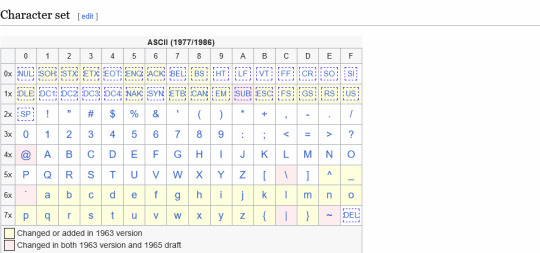
Something to remember for later: the number 0 is encoded as NULL, basically "nothing". This is useful because sometimes you want to enter text with an unspecified length, and so you stick a NULL in the end, and the interface reading it reads until it sees a NULL, and all is well. this will be important later
Standard explained, technical info for nerds, go to the next red section to pass
ASCII is a wonderful standard. remember: everything in electronics is easier with powers of 2 (1,2,4,8,16,32 etc.) because of the way we save data (if you want I can explain this further); the first 32 characters are the control characters. want to check if something isn't a control character? check if it's 128 or bigger than 32, and you're done (both powers of 2). the lowercase characters are 32 + their uppercase counterpart. all the numbers have a byte in common. truly, a marvel of engineering.
Standard explanation end
All was well until computers hit the scene not too long after, and used bytes. a byte is basically a whole number whose value can be only from 0-255. they are the standard building block of computer memory, and they have 8 bits.
some countries, like France, used encodings compatible with ASCII, and used the final bit to encode their language's characters. different countries used different versions of encodings, some countries (like Japan) had multiple encodings for the same characters. each encoding used a different number of bits, and different letters for each bit.
But that is fine since, well, how often do you need a computer in London to use an interface in Tokyo? all is well.
Then the World Wide Web happens, and suddenly computers speaking different languages read and write complete garbage everywhere.
So an organization called the Unicode Consortium tries to solve the problem, and to create a unified symbol for all languages. They called the standard utf-8
This standard supports 1,114,112 different characters. at present, only around 10% of this data capability is actually used. this includes dead languages, and emojis (which is a wonderful story)
Standard explained, technical info for nerds, go to the next red section to pass
Issues to tackle in a universal text encoding standard:
The protocol must be backwards compatible with ASCII: if you are writing text in English, which is the language most users used, because ASCII is the standard for this language, your new standard must be readable as ASCII as well
The protocol must never send 8 zeros in a row, except for the NULL character, otherwise old computers will stop reading in the middle
You must be able to minimize space wasted: to create a universal standard one can just make every character 32 bytes long and call it a day, but you would waste a bunch of space that way, and space is expensive
You must be able to pass from letter to letter easily. no saving the index of each character in some sort of list.
english characters are just ASCII. no thinking there. the first bit is set to 0 and so it is very easy to spot
if not, here's what you do:
the first byte has its first bit set to 1, so it's not ASCII. from that point onwards, you count the number of remaining ones until a zero appears. in this case, 1. this is how many more bytes will come. from there on, the rest is data. the first 2 bits of every next byte would start with 10 until the character ends
let's say your character is 2 bytes long, here is how you would represent it:
110somec , 10haract
and when removing the headers, you'll have
somecharact
which will be some character.
let's say your character is 3 bytes long, here is how you would represent it:
1110some , 10charac , 10ter___
and when removing the headers, you'll have
somecharacter___
which will be another character.
if you wanna go back 1 character? just go back bytes until you find one that starts with something other than 10
no excess Nulls will appear because the only way to get 8 zeros
Standard explanation end
#ascii art#ascii entertainment#ascii#unicode#language#emoji#linguistics#hieroglyphs#programming#coding#encoding#standard
9 notes
·
View notes
Text
AMD Versal AI Engine: Powering Next-Gen Intelligence

What is Versal AI engine?
The Versal Premium line, which integrates AI Engines, has exceptional adaptive signal processing capability and is designed for the most demanding compute and data transportation applications in wired communications, data center computation, test and measurement, and aerospace and military.
Versal AI Engine
The AI Engine Array Interface may be configured with to the AMD LogiCORE AI Engine IP. Through tiles included in the AI Engine Array Interface, this array is linked to both the Network on Chip and the programmable logic (PL). This IP specifies the clock controlling the AI Engine array and permits the definition of the number of AXI4-Stream and memory-mapped AXI interfaces with their corresponding width and orientation.
Key Features and Benefits
AXI4 configuration interfaces that are memory mapped.
AXI4 master interfaces that are memory mapped.
AXI4-Stream master and slave interfaces having 32, 64, or 128 bit data widths that may be adjusted.
Fast streams may be enabled by choosing to enable registered interfaces.
Programmable logic (PL) stream clocks automatically associate.
Designing AMD Versal AI Engine
Image Credit To AMD
AMD Developing Versal AI Engine with Vitis Model Composer AMD With Vitis Model Composer, algorithms designed for Versal AI Engines may be quickly simulated, explored, and coded from inside the Simulink environment. This may be accomplished by importing kernels and data-flow graphs into Vitis Model Composer as blocks and adjusting the block GUI parameter to control the behavior of the kernels and graphs, or by utilizing the AI Engine library blocks.
Additionally, the tool lets you use a combination of AI Engine and programmable logic (HDL/HLS) blocks to create and simulate a design. By seamlessly integrating Vitis Model Composer AI Engine blocks with Simulink source and sink blocks, simulation results may be viewed.
For usage in the Simulink environment, Vitis Model Composer offers a collection of blocks that are optimized for speed. These consist of:
AI Engine blocks
Image Credit To AMD
Comprises a collection of intricate AI Engine DSP building elements pertaining to mixers, FIR, FFT, and DDS.
includes blocks for importing graphs and kernels that may be directed to Versal devices’ AI Engine section.
HLS (Targeting PL and generates HLS code)
Targeting PL and producing HLS code, HLS provides preset blocks that contain bit-wise operations, logic, linear algebra, and math functional blocks.
Block the import of HLS kernels that are intended for Versal devices’ PL section.
HDL (Produces RTL code and targets PL)
Blocks for modeling and synthesizing DSP, arithmetic, and logic components on an FPGA
contains a FIR Compiler block that targets the Versal design’s specific DSP48E1 and DSP48E2 hardware resources.
Blocks that facilitate communication between the AMD HDL blockset and the AI Engine.
Unleash DSP Compute with AMD Versal AI Engines
For next-generation DSP workloads, speed up demanding high-performance DSP applications.
AMD Versal AI Engine Technology Enables High-Performance Digital Signal Processing (DSP) Requirements
Clients developing next-generation DSP applications need enormous computational power, which conventional FPGA designs cannot effectively provide. Large quantities of DSP blocks and programmable logic resources may be used by compute-intensive DSP applications like FIR, FFT, and General Matrix Multiply.
The total computation capability that conventional programmable logic devices may provide may be greatly diminished by this need. For demanding DSP workloads with stringent power constraints, just expanding the number of DSP blocks and programmable logic available is not a scalable solution.
In these situations, Versal AI Engines are intended to provide a more effective computing solution.
Boost Compute and Use Less Power
Optimize performance and transform your DSP designs.
Did you know that you may increase scalability and efficiency to satisfy the growing needs of high-performance, next-generation DSP applications? Learn 5 strategies to improve your DSP designs using AMD Versal AI Engines.
Access Benchmarks Comparing Versal AI Engines to Previous Programmable Logic Technology
Please get in touch with sales or your FAE for test results and source designs for head-to-head benchmark comparisons between designs that use just Programmable Logic and adaptable SoC + AI Engine designs that use AMD Versal adaptable SoCs.
Get Started with Versal AI Engines for DSP
Increase DSP compute density for the next generation of demanding DSP workloads by speeding up the most demanding high-performance DSP applications.
Read more on govindhtech.com
#AMDVersalAIEngine#PoweringNextGenIntelligence#AIEngine#FPGA#AMDVersal#KeyFeatures#AMD#DesigningAMD#AIEngineblocks#DSPCompute#technology#technews#news#govindhtech
2 notes
·
View notes
Note
Hi Moon!
Mind telling me about your newest rebornverse ocs OvO
This kinda turned into a masterpost ngl. That’s because even the ones you know have changed a lot. The ones you know feel like different characters compared to now so I think some reintroductions are in order too ^^
13.5 spoilers + big oc post below.
Stella “Fate” Aquila (she/her - 16 years old): Interceptor of Forgiveness and the Paragon of Fairytaleverse. Her host is Alain. She’s a fae from a whole another world. She got caught in a dimension portal and was saved by Variya if she agreed to become an interceptor. She had little clue about pokemon when she first arrived but quickly grew. Unknown to her, she’s meant to stop the damages done and left over renegade data by Lucifer after he reset the world. She suffers from visions of renegade but uses these to help her. She can speak to fairy type pokemon.
— important links —
Fate’s Reference Sheet
Why is Fate’s trait ‘Forgiveness’?
Lucifer Nash (he/him - 12 years old): Interceptor of Absolution and Renegade of the Fairytaleverse. His host is Axel. Coming from Aryith and a decesendent of ancient dragon tamers, he was killed by a Sawsbuck when running away from home and picked up as soul by Variya. He is very knowledgeable in dragon type pokemon and runs a dragon sandstorm team. Eventually comes to regret his actions in renegade. Creating Angel, a virus in Zeight, he resets the world and deletes himself. Despite it having not shown up in generations he has the ability to speak to dragon types like his old ancestors could.
— important links —
Hero Farrell (they/them - 18-19 years old): Interceptor of Acceptance (paragon) OR Denial (renegade). Their host is Aevis. Hero is an old Gurafan Volunteer and in fact, they were seen as the person who could’ve saved them all. The Archetype gave them the power of ‘debug’ they can do anything you can with debug, provided they have the energy. This didn’t come without consequences as they became HOH and much much physically weaker. Their power was also unstable. They were to be put into a simulation so they could safely explore their powers. However, Variya saw they were being trained to become a mass weapon. So she tampered with Hero’s pod, leading them to get shocked to death. Later, Variya would use Hero’s soul to replace Aevis. Unfortunately, Hero has no memories of their death and believes Aevium to be the simulation. Not apart of Fairytaleverse unlike everyone else. They vibe alone.
— important links —
Hero’s reference(s)
Hero’s beliefs on life
Altair “Calamity” Aquila (he/him - 32-33 years old): Fate’s older brother and also a fae from the same world. He came to Aevium purposefully in order to look for Fate once he learned what happened to her. He typically uses his illusion magic to hide his fae features from the public. He ran into Clear and Kieran who promised to help him find and save Fate as long as he helped them. Unfortunately he was played and as of the end of karma files he’s been captured alongside Mosely and Reigna. His wings were torn off too, in order to stop him from being able to fight off his former companions. He doesn’t appear in Renegade of the Fairytaleverse. Also, like Fate, he can speak to fairy type pokemon.
— important links —
Sylvester (he/she - unknown age, appears to be in his 30s): A servant of Nymeria and Vitus, created a bit after Kanon. Sylvester was found with Hazuki after the battle under Hiyoshi. However, he had no memories of the events and evacuated Storm 9 with Hazuki and Thomas Sr. Sylvester stayed with Hazuki afterwards, becoming a personal butler to the Blakeory’s. First met in Blacksteeple castle, having also been a victim of Xen’s kidnapping. Though, she’s also apart of the early appearance scene with Hazuki and Lavender. She’s has a Gardevior in Fairytaleverse’s renegade but in Paragon it becomes a Iron Valiant.
— important links —
Sylvester’s Ref
Servant Sylvester (chapter 14)
Rosemary Marsh (they/them - 28 years): Rosemary is the leader of Darchlight Village. They were born in Alamissa Urben and was apart of the friend group with Damien, Alex, Adam, Ryland, Karen and Aurora. However they moved at 13. Their parents are actually the couple who took in Crescent. So they have some history with her, which in turn had gotten them interested in the group upon learning she attacked them from Sylvester. They become the Grass Reserve leader after Flora’s arrest too. They also become the Gym Leader in Fairytaleverse Renegade. Given their role and their relationships with other characters they’re the most aware that something is wrong….In renegade they have a Amonguss and in paragon they have a Brute Bonnet.
— important links —
Aurora Vale (she/her - 28 years old): Aurora is a high ranking Deathwing of Xen with a big love for bird pokemon. She is often put into leadership roles, such as leading the Akuwa abduction. She also often takes it upon herself to help struggling members like Shanon and Eli. Nastasia asked for her help during chapter 14 as well. Which ended awkwardly….as Aurora is childhood friends with the Sashila gang….In renegade she has a Delibird but in paragon she has an Iron Bundle.
— important links —
Aurora’s Family Tree
Angel (its/it - appearance of a 13 year old): Angel is the virus that was created by Lucifer that infects Zeight. It holds all the data of renegade and is protecting it until it’s time. Angel has a secret rift form for when it is attacked. It’s very existence is the major reason for there being so many inconsistencies within Fairytaleverse. It cannot leave Zeight usually, though it can speak to Fate from it and give her visions. In rare cases it can appear when things get especially fucky within the timeline. It’s goal is to guide Fate onto paragon and keep it like that. Angel doesn’t appear in renegade and in paragon Angel replaces Nancy as the administrator.
— important links —
GENERAL FAIRYTALEVERSE LORE.
Fairytaleverse’s Concept.
Fairytaleverse’s interceptors + official saying
Fate and Calamity’s original world
Fae Culture Context (names)
#Oughh this is a lot#feel free to ask more about them!#pokemon rejuvenation#oc: stella ‘fate’ aquila#oc: lucifer nash#oc: hero farrell#oc: altair ‘calamity’ aquila#oc: sylvester#oc: rosemary marsh#oc: angel#pokemon rejvuenation: fairytale
6 notes
·
View notes
Text
On Recovering From Disaster

Just before disaster struck with my 68030 homebrew, I had a plan to fork the project and take it in two directions in parallel.
The first would be my minimal Multibasic setup which was running great and was something I would be proud to exhibit at VCFSW '25.
Since that was working well, I didn't want to do anything that might make it not ready for the show. So I had assembled a second main board that I could use with other peripheral cards to continue development. My plan was to rework the memory map to move ROM and I/O addresses to the upper half of the 32-bit address space, which would allow me to use a DRAM card for up to 16MB of contiguous memory starting at address 0 — a perfect setup for running a proper OS
And then I burned up my good mainboard.
I had a spare CPLD on-hand, and I was able to get another 40MHz 68EC040 for cheap. But the 4Mbit SRAM chips are expensive, and I thought that if I was going to be paying for more SRAM, I should get the 12ns parts that would allow me to run RAM with no wait states at 50MHz. Which would require adapter boards, and more pin headers, and would have just driven the cost up even more.
Paralyzed by indecision and the rising cost, I decided to switch gears. I already have the DRAM board I built years ago, I just needed to get it working. And if I'm doing that, I may as well do the work on reorganizing my memory map.
So that's what I did. I made a new branch on my newly cleaned up repository, and set to work. I updated the mainboard bus controller logic to remove the no-longer-needed SRAM control, adjust the ROM address to start at 0x8000,0000, and move the 6850 UART address to 0x8008,0000. This freed up the entire 2GB space between 0x0000,0000 and 0x7FFF,FFFF for the DRAM card to use for main memory (my bus connector layout only allows for up to 16MB main memory, but that's plenty for my purpose).
Next, I needed to build the control logic for my DRAM board. I've done this once before on my Wrap030-ATX project a couple years ago, so I used that logic as a starting point. It … kind-of worked. Sometimes. Maybe.

I was getting random errors all over the place. Sometimes it was able to copy all of ROM into RAM and verify the copy without error, but it would fail when running code from RAM. Sometimes it wouldn't even pass the first two simple tests of writing a longword to RAM and reading it back.
Back to the data sheets to plan out the logic. I drew out a new timing diagram down to 1ns resolution, accounting for the specified propagation time for my CPLDs, and the measured signal delays for my CPU. This gave me the information I needed to build out a new state machine for the DRAM controller. In the process I also caught a few other bugs in my original logic, such as not ensuring the DRAM Write Enable strobe did not get asserted during refresh cycles.

The new state machine worked much better, but I got my timing off a bit. It worked reliably at 16MHz, but not at the intended 25MHz. At least it was working though; I can move forward with 16MHz.
The next thing to do was get my 8-port serial card working with this new setup. Every time the computer tried to access one of the 8 serial ports, it would get a bus error. This was a tough one that had me stuck for a while.
It looked like the serial card was getting addressed and asserting DSACK0# as expected, but I couldn't confirm the signal was making it back to the CPU. Every time I tried to measure the DSACK signals, the probes would increase the line capacitance (I think) too much and cause the whole computer to fail before it even got to the point of trying to address the serial ports.


I have the DSACK signals in a wired-or configuration. The logic on each card connects to the proper DSACK signal via an open-collector buffer, and is able to pull the signal low to signal that card acknowledging the bus cycle. The signal is then pulled back up to +5V by a 1kΩ resistor. This works well enough for small, slow systems, but with long bus wires or lots of chips on the bus, the extra capacitance means it can take a long time for that pull-up resistor to get the signal back up to +5V.
I made a change to my DRAM controller to actively drive the DSACK signals to +5V briefly at the end of a bus cycle before setting the pin to high-impedance. This helps ensure a fast rise time at the end of the cycle so it doesn't disrupt the next bus cycle.
It didn't fix the problem with the serial card, but it did allow me to actual probe the signals live to see what was happening — the Bus Error signal was getting asserted immediately after the CPU addressed the serial card. This didn't make much sense to me. My main board logic will assert Bus Error if no peripherals acknowledge a bus transaction within 64 clock cycles. Nothing should be asserting Bus Error so quickly.
Except … the main board bus controller. My original memory map used the lower half of the address space for the main board, and peripheral cards used the upper half. So my original main board logic was built to assert Bus Error immediately for an unused address in the lower half of the address space. I hadn't properly removed that bit of logic, so it was now asserting Bus Error for any accesses to the upper half of the address space that weren't used by the main board.
The challenges of working on a project after six years. I had forgotten that bit of logic was even there.
With that erroneous Bus Error assertation removed, the machine was finally able to properly load my Multibasic kernel and run BASIC for 8 users again.


At the moment it is running stable at 24MHz on my 25MHz-rated full 68030. It may not be the 50MHz high I was at, but after the frustration and disappointment of the past few weeks, I'm absolutely taking that as a win. 24MHz is incredible.
#mc68030#motorola 68k#motorola 68030#vcfsw#wrap030#retrotech#debugging#troubleshooting#homebrew computing#homebrew computer#retro computing
23 notes
·
View notes
Text
Last Monday of the Week 2023-12-11
la baguette, etc.
EDIT: god damn this got longer than I expected
Listening: I almost exclusively listened to Against Me! during this trip for some reason. On Saturday night my metro got interrupted and I got kicked out a few kilometers from my hotel, and after watching a couple full busses skip my stop, I just walked back. I put on Black Crosses for the first time, which is a combination of demos and acoustic versions of the songs from White Crosses which is probably one of my favourite punk albums.
I can't listen to some of Against Me! without having a good bad time because of Memories but I do not have that issue with White Crosses. As far as the demo/acoustic versions go, they are much lighter than the mainline releases which is bad if you want something energetic but good if you kind of want to soak in the lyrics.
There's a lot of great ones on Black Crosses including the obvious ones like Spanish Moss and The Western World but the one that really got me while walking back was the acoustic version of Because of the Shame which is positively heartbreaking when given space like this.
Reading: I fell down a rabbit hole on delta-sigma conversion while doing simultaneous reading up on 32-bit float audio and what the hell DSD is. I will reverse explanations.
Delta-Sigma is a collection of techniques used, roughly, to convert between high-sample-rate, low-bit-depth data and low-sample-rate, high-bit-depth data. A delta-sigma audio analogue-digital converter might sample a low-pass-filtered version of incoming signal at 6MHz and 1-2 bits and use that to reconstruct a 16-bit 44kHz version of the signal. Thanks to nyquist and other various equivalences this works with basically zero quantization error if you chose your filters right.
I was familiar with this from class-D amplifiers, which are effectively delta-sigma digital-analogue conversion, which reproduces a low-frequency analogue signal by feeding a pulse-density encoded chain into an amplifier and a low pass filter.
Anyway, DSD is a silly audiophile brand name for an audio codec that stores the 1-bit pulse encoded form of an audio signal rather than storing traditional PCM audio. Fundamentally if your hardware is correct there's basically no difference in information content or density between them.
This led me to these two good articles on dithering and delta-sigma architecture, among others.
Watching: I stumbled across this ongoing good series on YouTube a few weeks ago discussing trends in marketing movies as being "no CGI" when they are absolutely the fuck not. The second part just came out, but here's part 1:
youtube
"No CGI" is always a ridiculous claim in basically any modern movie, but this is a really good breakdown of how a combination of irresponsible journalism and intentionally poor communication creates the impression that tons of incredibly effects heavy movies are actually "free of CGI".
Treating computer graphics and effects as some kind of scourge is a misled reflex. It reminds me a lot of backlash against pitch correction, because in most cases people do not realize how much pitch correction is used in basically all music you hear. Big artists playing live performances are even pitch corrected in real time these days.
It's just part of the business, and in a very parallel way, people expect the output of CGI/pitch correction even if they don't know that. If P!nk were to go out on stage and sing her music without pitch correction you'd hear the effects of her ridiculously energetic acts, and people would bitch about it because as evidenced by people who describe good sounding music systems as feeling "like live music", people don't know what live music sounds like! Live music sounds like crap compared to studio production, you're there to inhale six different kinds of cigarette and get hit in the chest by a drunk girl who isn't paying attention to where she's going.
Wow I have a lot of opinions about how people don't realize how much production is in things. This should probably be a post. Later. Hey this is like guys who talk about "no makeup" look-*I AM YANKED OFFSTAGE WITH A COMICALLY OVERSIZED SHEPHERD'S CROOK*.
Playing: Nothing really! Dark Souls stalled not because I'm stuck but because I was doing other things. Making block took up a lot of time.
Making: Hacked together a very basic proof of concept for inserting my own controller into an LED string. As encouraged by definitely unbiased user @compiler-specific I am going to try and write my own DSL for this, which will probably end up resembling a lisp just because that simplifies my life.
Also almost done with hambanner, an IRC ban management bot. I would have finished that if I was not. In Paris. over the weekend. Hopefully this week.
Tools and Equipment: Sometimes you will find that your phone is dead and you need to find your way back to your hotel in a bizzarely convoluted part of La Défense late at night. And at this time you will be grateful that you took the time to orient yourself relative to local streets and the river and the metro station so that you do not have to find a corner to charge your phone and can instead just get back to your hotel. It could happen to you.
9 notes
·
View notes
Text
Characteristics and Applications of LoRa Spread Spectrum Modulation SoC Module
LoRa spread spectrum modulation technology, known for its low power consumption and long-distance transmission capabilities, excels in long-range wireless communication. So, what kind of sparks will this modulation technology create when applied to SOC modules? Let's briefly illustrate this with the LoRa-STM32WLE5 LoRa spread spectrum modulation SOC module developed by NiceRF.
The LoRa-STM32WLE5 wireless module is SOC wireless module the latest developed by NiceRF Wireless. The LoRa-STM32WLE5 adopts ST's STM32WLE5 chip as the main chip, equipped with a high-performance Arm Cortex-M4 32-bit RISC core, operating at a frequency of up to 48 MHz. supporting 256KB flash memory and 64KB operational memory. This module ensures ample storage and processing capabilities. Additionally, the module is equipped with an industrial-grade crystal oscillator, ensuring stable operation in various working environments.
In terms of communication technology, the LoRa-STM32WLE5 adopts LoRa spread spectrum modulation, which features low power consumption and long-distance transmission. This makes the module perform exceptionally well in ultra-long-range wireless communication. It has a high receiving sensitivity of up to -141dBm@BW=125KHz and adjustable transmission power, with a maximum of 22dBm, allowing for transmission distances of over 5000 meters. This characteristic offers extensive application possibilities in fields such as security systems, smart agriculture, and industrial manufacturing.
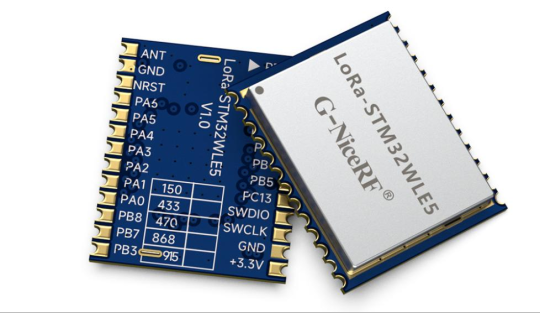
In addition to its technical features, the LoRa-STM32WLE5 also has advantages such as low power consumption, secure encryption, and multiple interface types. Its sleep current is less than 1uA, and its receive current is less than 8mA, making it suitable for scenarios requiring long battery life and high energy efficiency. Additionally, it supports 256-bit hardware encryption and PCROP read/write protection, ensuring data security and integrity. The support for various interface types, including UART, SPI, I2C, GPIO, and ADC, enables it to meet the interface needs of different application scenarios, offering excellent scalability and flexibility.
In terms of applications, the LoRa-STM32WLE5 wireless module can be widely used in security systems, smart agriculture, industrial manufacturing, and smart home scenarios.
For example: in security systems, it can be used for remote monitoring and alarm systems; in smart agriculture, it can be utilized for agricultural environment monitoring and automated irrigation systems;in industrial manufacturing, it can be applied to equipment monitoring and remote control systems; and in smart homes, it can be used for smart door locks and environmental monitoring.
In the future, with the development of IoT technology and the proliferation of intelligent applications, the LoRa-STM32WLE5 wireless module is expected to demonstrate its value in more fields. For instance, in urban smart construction, it can be applied to smart city traffic systems and intelligent energy management. In the industrial IoT sector, it can be used for remote monitoring of industrial equipment and intelligent production lines. Additionally, as technology continues to advance and costs continue to decrease, the LoRa-STM32WLE5 wireless module will become more widespread and mature, bringing more convenience and possibilities to people's lives.
For details, please click:https://www.nicerf.com/products/ Or click:https://nicerf.en.alibaba.com/productlist.html?spm=a2700.shop_index.88.4.1fec2b006JKUsd For consultation, please contact NiceRF (Email: [email protected]).
4 notes
·
View notes
Text
How computer memory should be measured
I now have a conversion utility for going from old units to new ones! You can find it at my website here: https://samflir.neocities.org/newmemory
The problem with the current units
2^10 has no significance to modern computers using 8-bit bytes. 1000 has no significance to any binary computer. These reasons alone should've ruled out the current units having ever been used. They're horribly arbitrary, and although 2^10 is a marginally better option, it's still terrible.
To make an analogy with a unit we're all fine with measuring in non-metric units, we didn't redefine a year to be 1000 days long because it looks nicer. Years are still 365.25 days because time is fundamentally not base-10. Divisions of a day could go metric and in fact should, but you could not hope to make time metric beyond that. Yet this is what computer scientists have attempted to do to computer memory.
The better option
If you're familiar with the 8-bit microcomputer programming scene, you may have heard the first 256 bytes of the 6502 processor's address space being called the "zero page". This is because the most significant byte of its addresses are all 0.
From this we get the page, the fundamental grouping of bytes under the new system. For very small amounts of memory, measuring in just pages and bytes is fine. For example, the ZX Spectrum had exactly 192 pages of RAM at launch (48KB).
A page of memory is defined as the number of memory locations that can be addressed using a single byte. (2^bytewidth bytes) Note that this could vary wildly with different byte sizes. People think of a byte as strictly a grouping of 8 bits today, but byte sizes varied in early computers. The virtual computer series uses 16-bit bytes, so its 65,536 total memory locations are still only 1 page of memory. To know exactly how many bits are in a page, you need to know the byte size first, which is almost always 8 bits in modern systems.
Extensions
Obviously measuring the vast amounts of computer storage used by today's Big Data™ in units of 256 bytes is hopeless. That's where Lojban digits come in. Instead of needing to make up arbitrary prefixes as required like in the current system, just prefix a Lojban number that acts as a power to the number of pages specified.
Lojban digits are no, pa, re, ci, vo, mu, xa, ze, bi, so for 0-9. Pages could be called papages but are not, as they are a reasonable exception to the number pages as the default.
Lojban digits string together like phone numbers to form bigger numbers, so 10 is pano, 112 is papare, etc.
In an 8-bit byte system, 1 repage is 256^2 bytes, or 64KB. The Commodore 64 having 1 repage of RAM demonstrates an elegant aspect of this system, of maximum possible addressable RAM sizes being units themselves, rather than multiples of units.
8-bit addressing = 256 bytes = 1 page (MK14)
16-bit addressing = 64KB = 1 repage (Commodore 64)
32-bit addressing = 4GB = 1 vopage (32-bit processors)
If a computer has 1 unit of memory in total, the number in the unit tells you how many bytes are needed to address all of memory. If it doesn't have exactly 1 unit, then the number of the biggest unit tells you how high the most significant addressing byte will ever be + 1.
This system is extensible as far as practical purposes could ever require, and allows a reader to instantly calculate how many bytes any arbitrarily-large unit is, provided they're familiar with the Lojban digits used. It also clearly shows the underlying structure of how memory in computers is organised.
Notation
Pages are abbreviated to capital P and bytes to capital B with Lojban number prefixes abbreviated to their consonants n, p, r, c, v, m, x, z, b, s. The most significant unit is placed before the number, and subsequent page sizes are introduced with colons, before bytes introduced with a dot. Here are some examples:
431615 bytes = rP 6:149.255
12 bytes = B 12 or P 0.12
Should a byte width need specifying, add that as a number prefixed by a W to the start. The virtual computer series' RAM size could be measured as W 16 P 1.
But wouldn't non-technical people struggle with this?
Non-astronomers cope fine with our current base-24:60:60 time system and base-365.25 calendar. They'll cope fine. Non-economists also coped fine with and were resistant to changing Britain's £sd currency system and that was a pointlessly non-decimal system! The obvious benefits of the new system more than make up for any initial confusion with dealing with it. Not everything needs to be, or should be decimalised.
7 notes
·
View notes